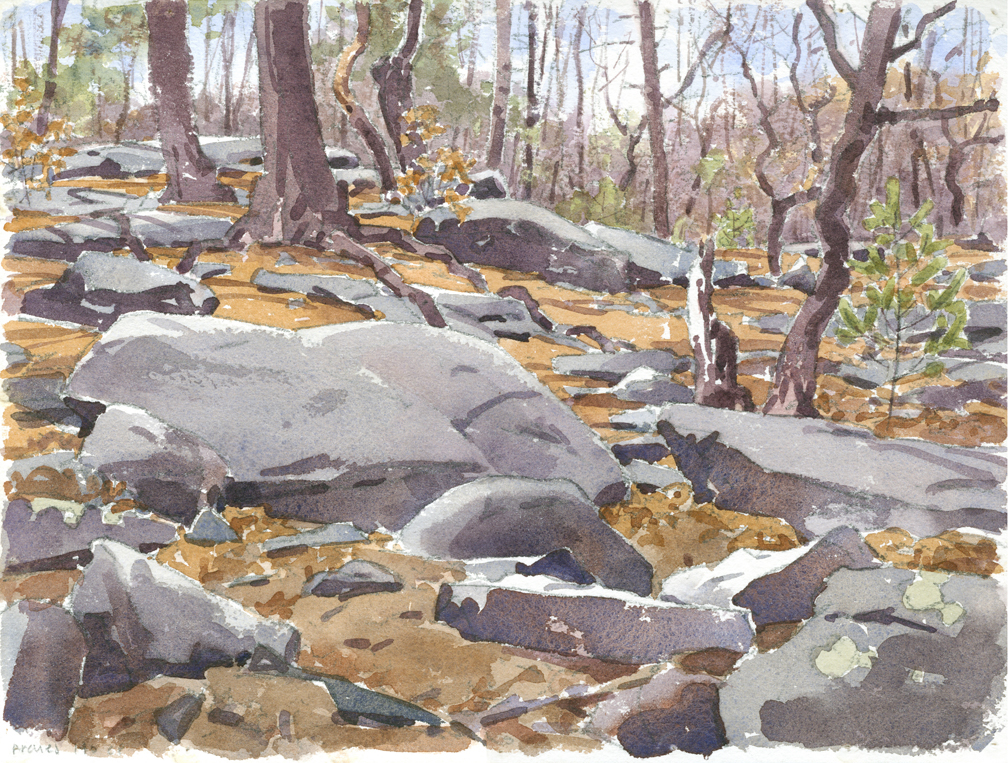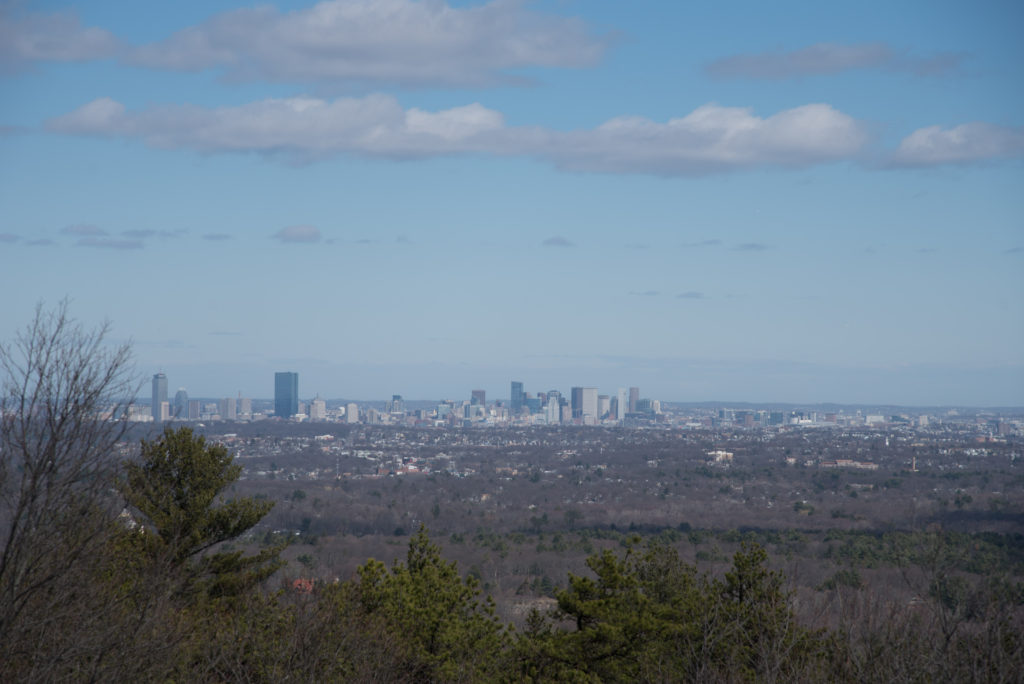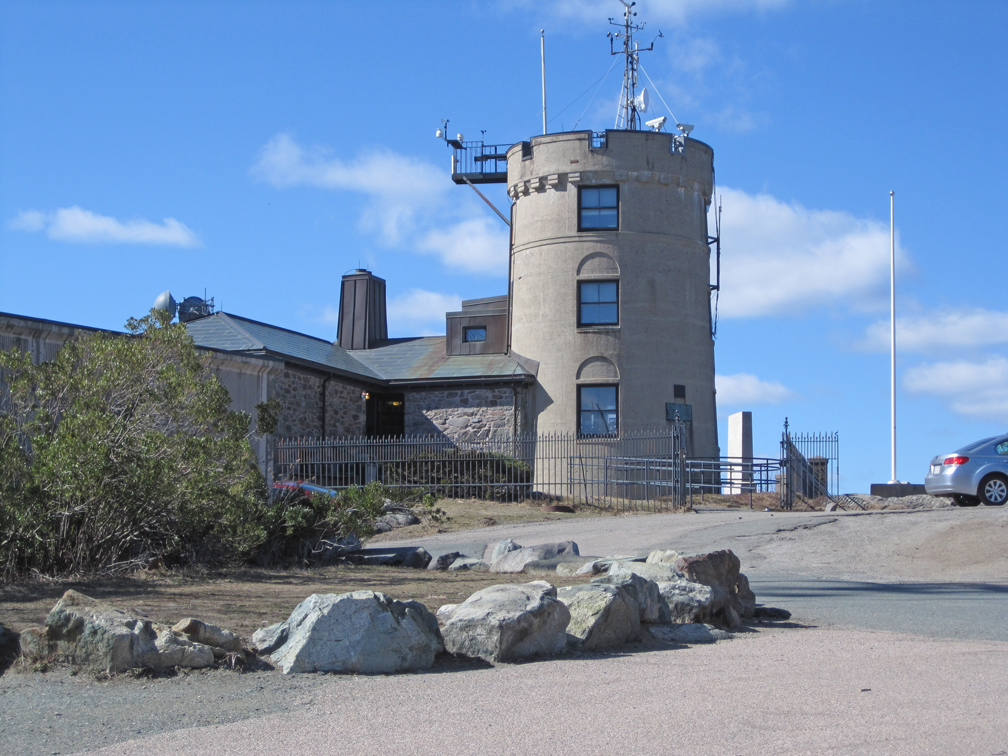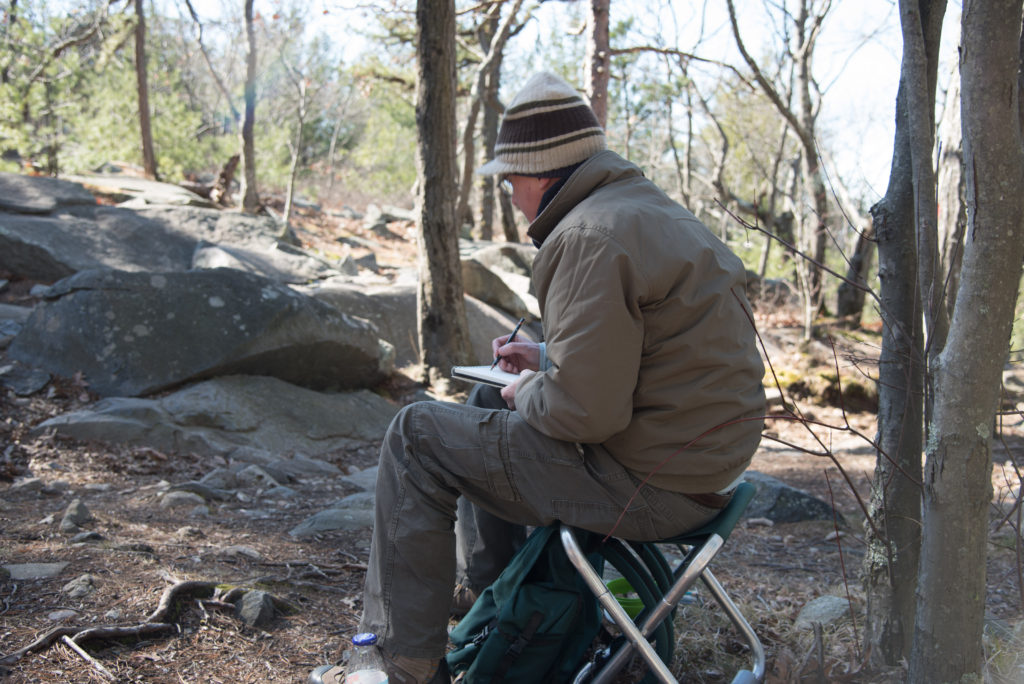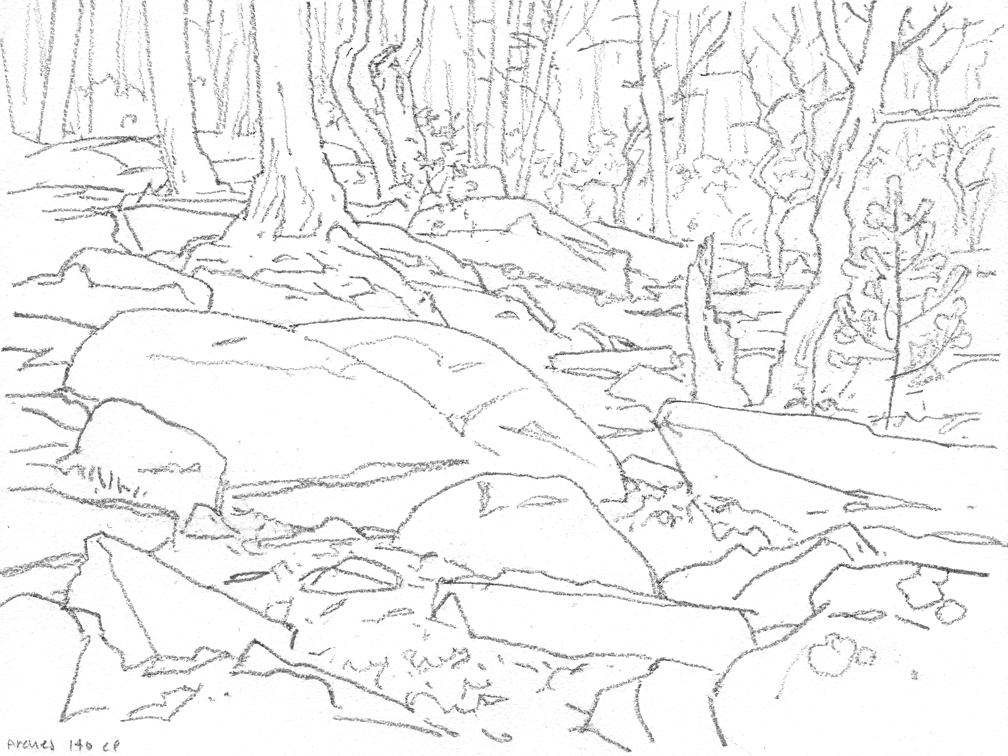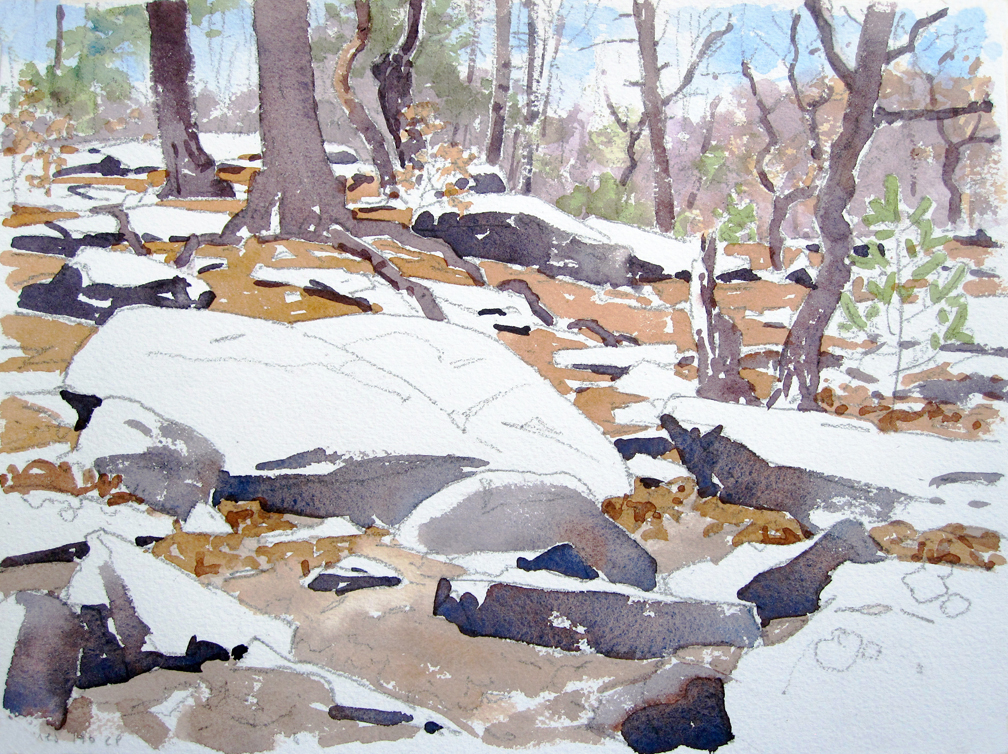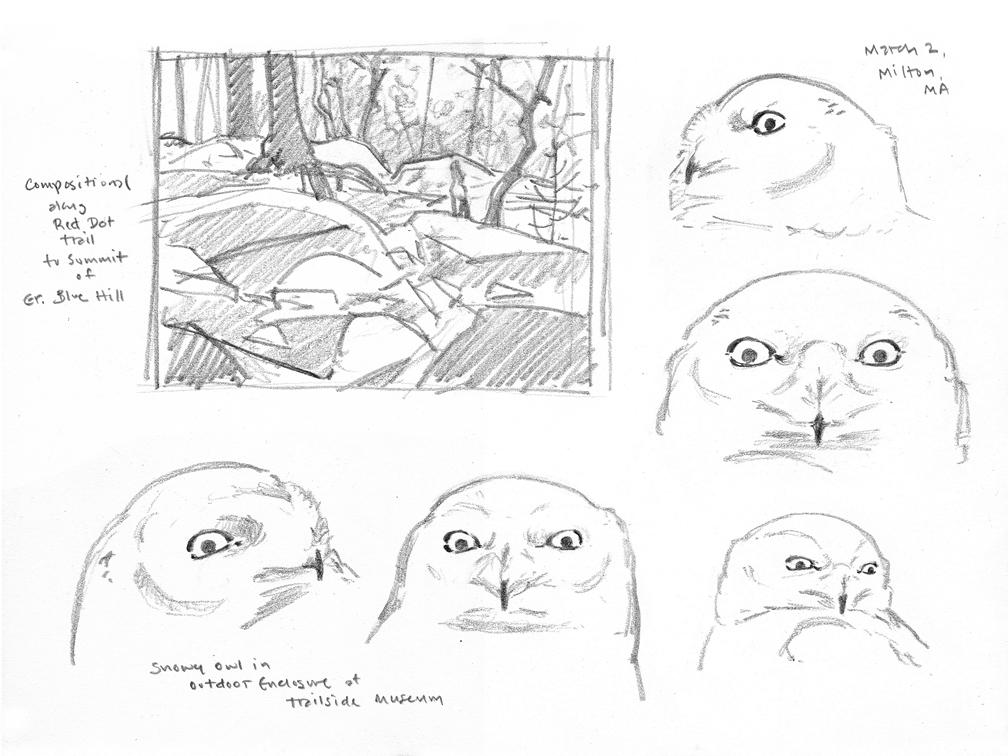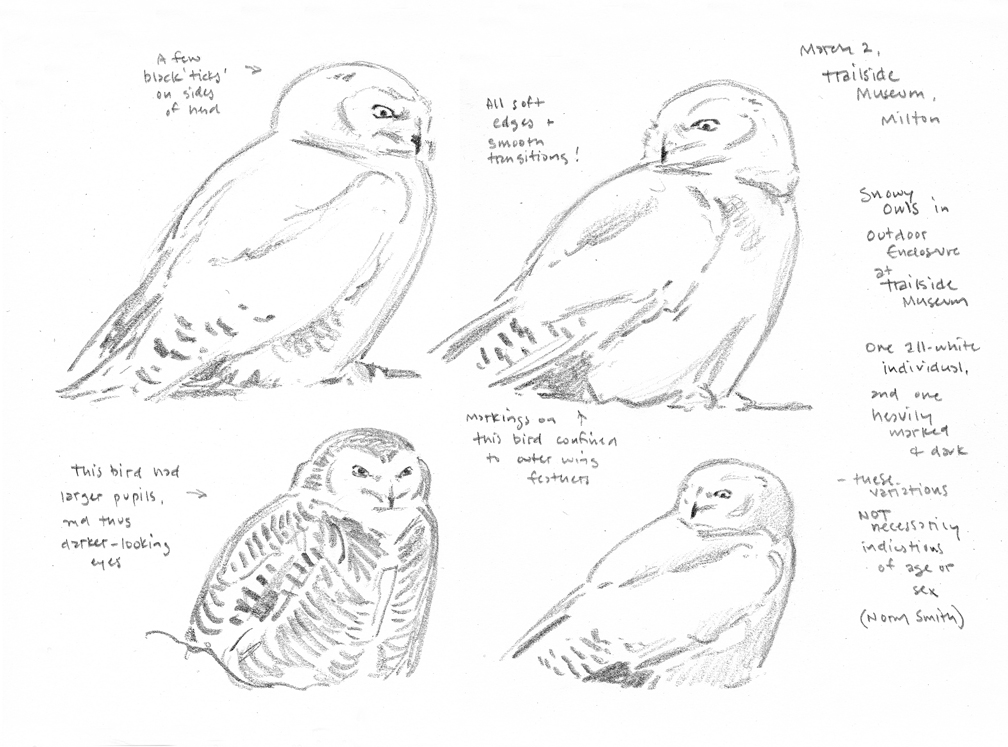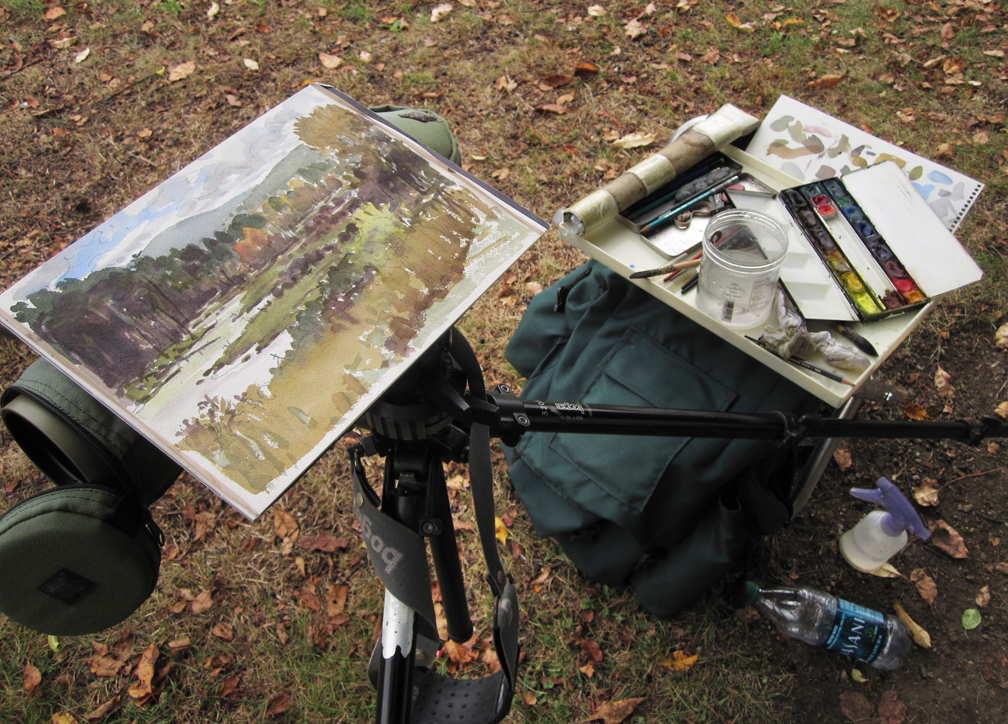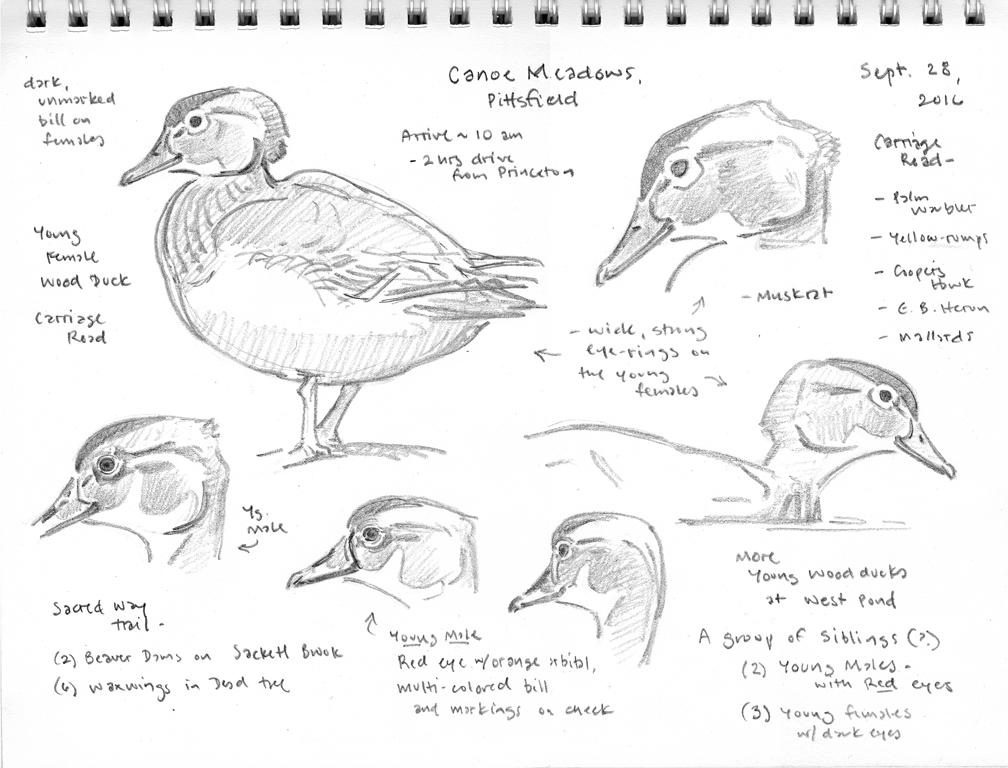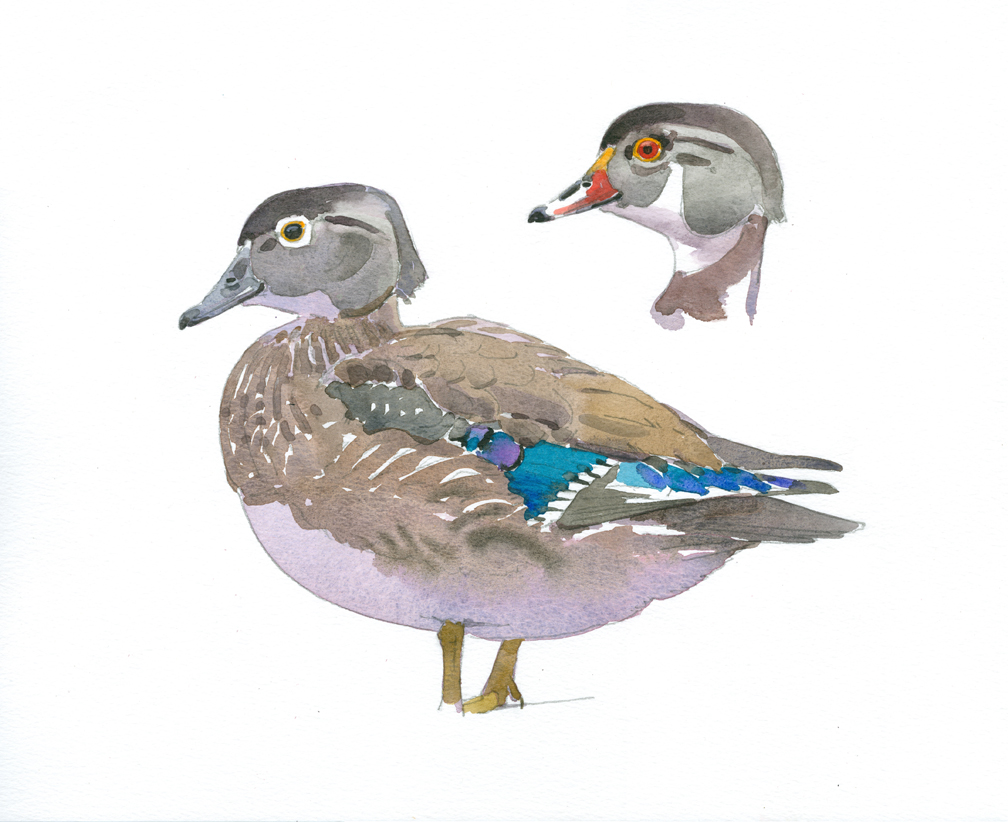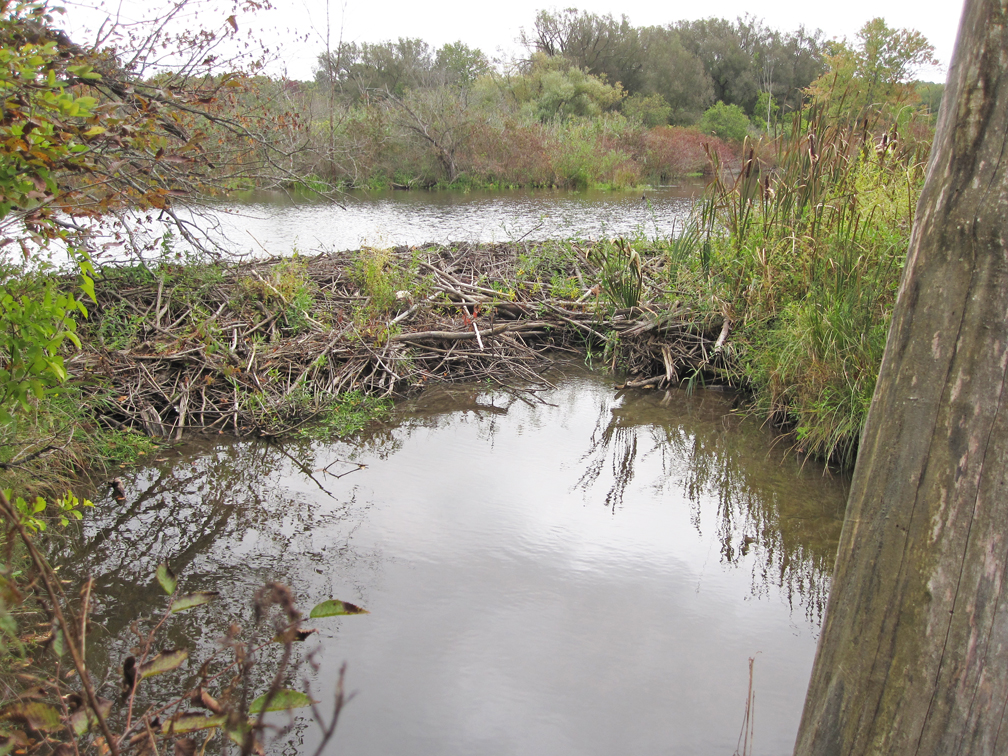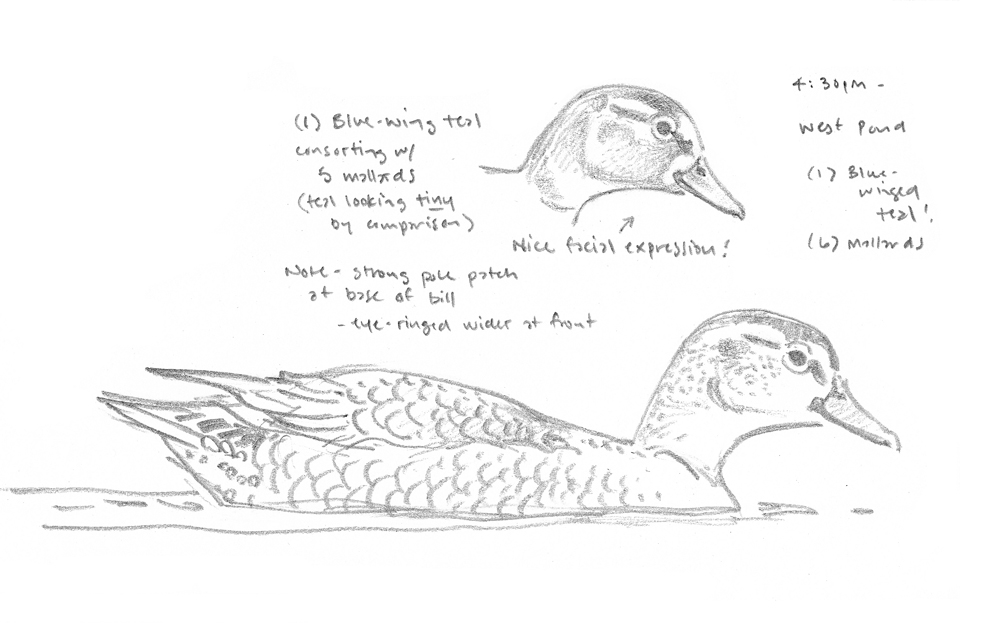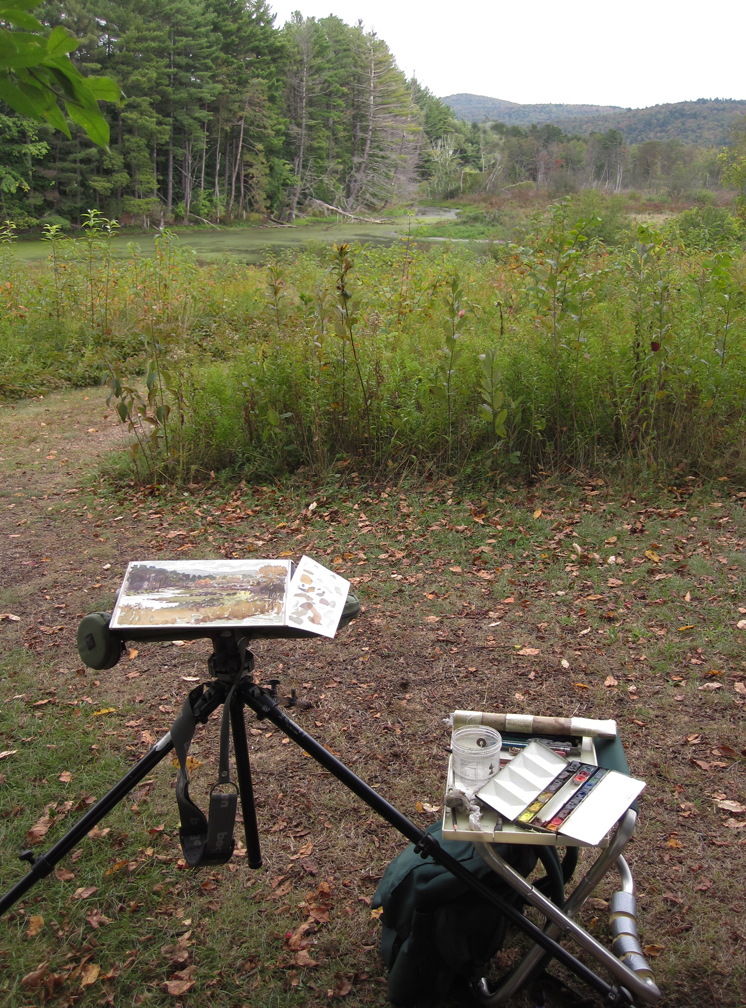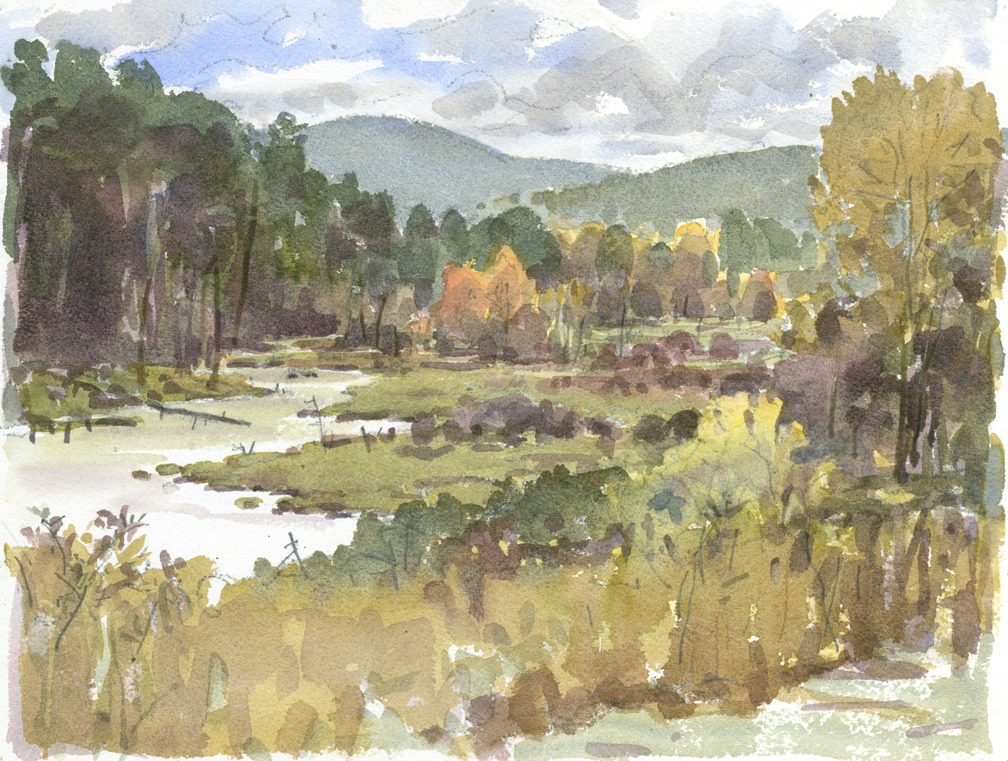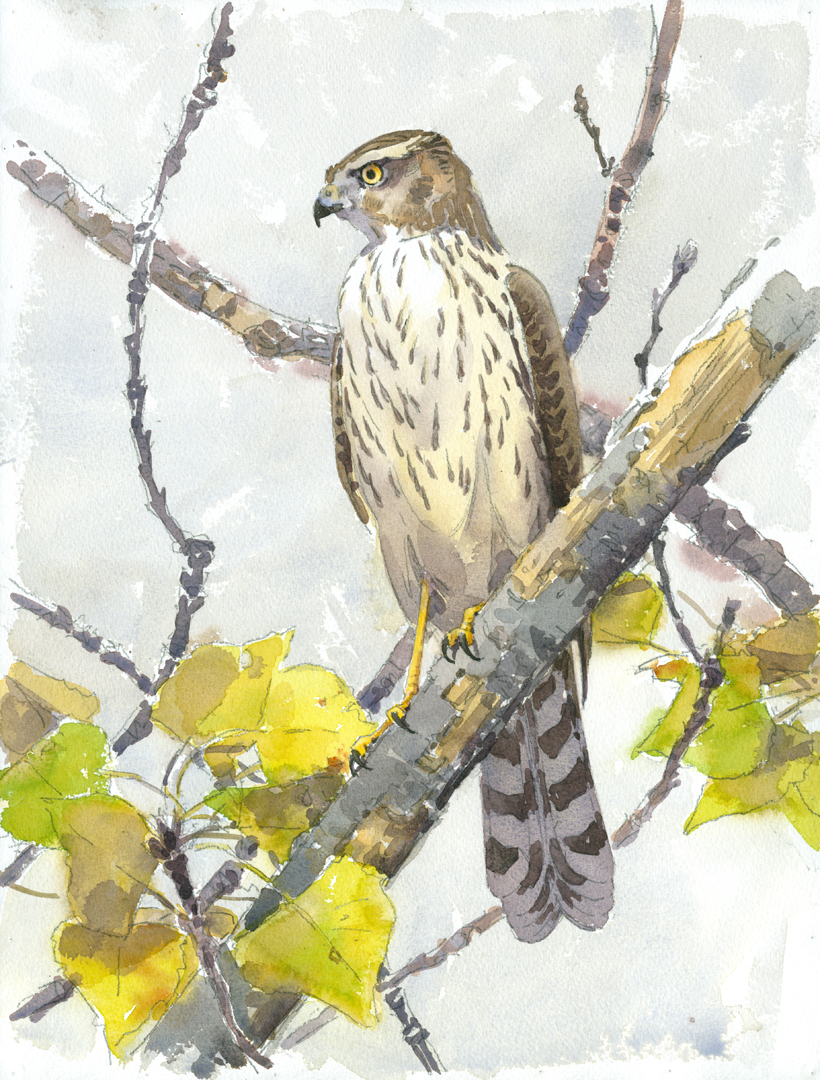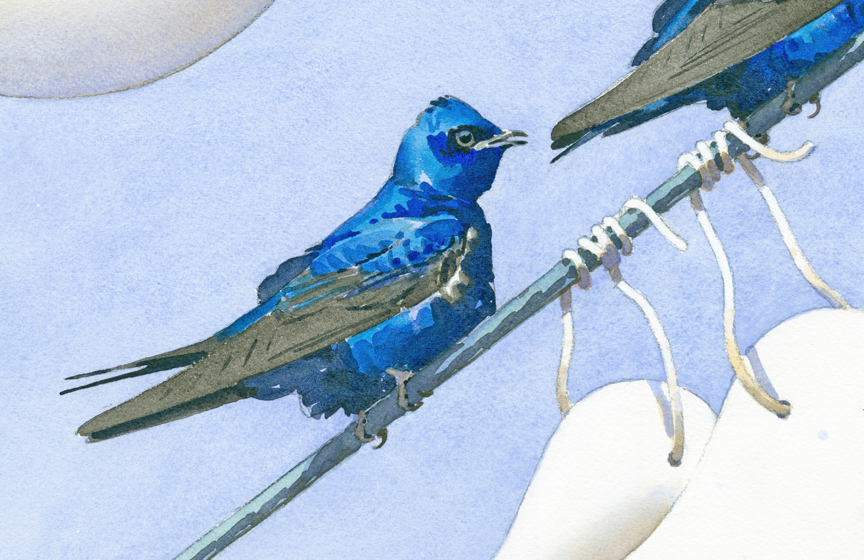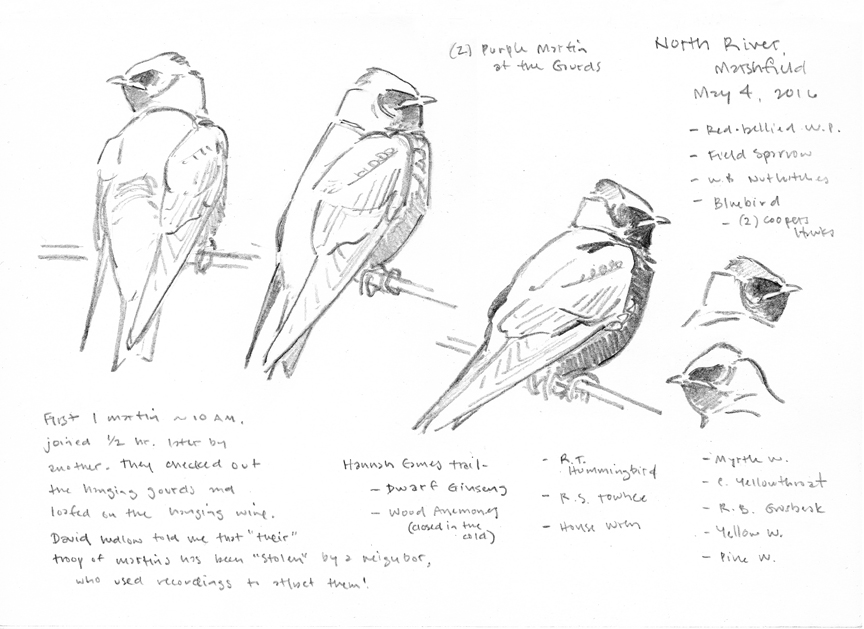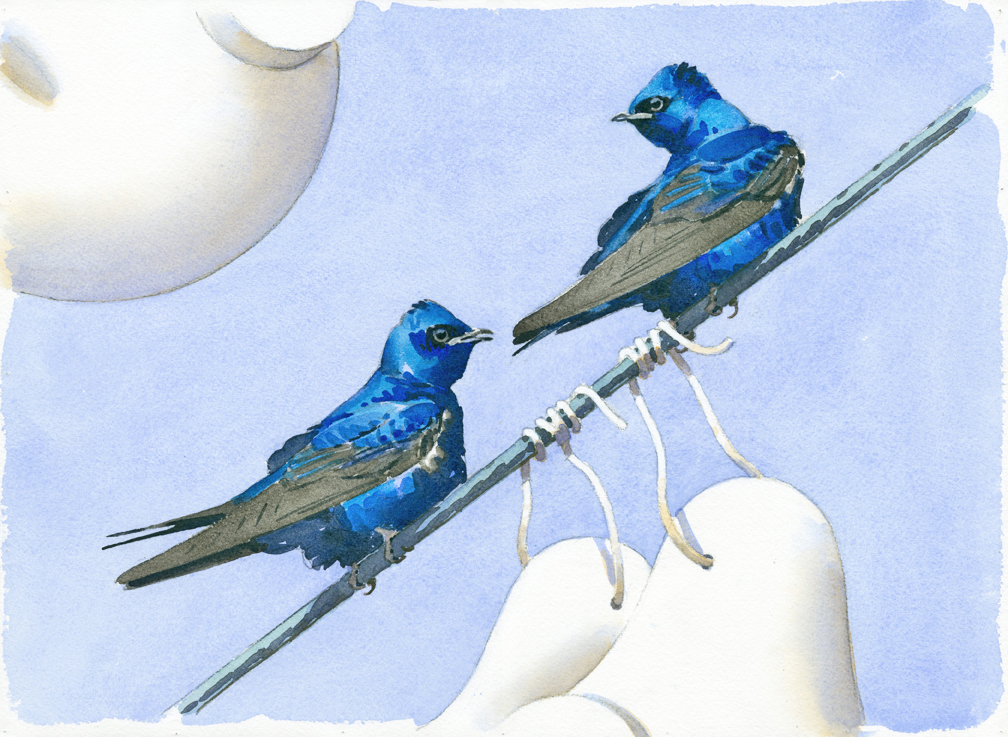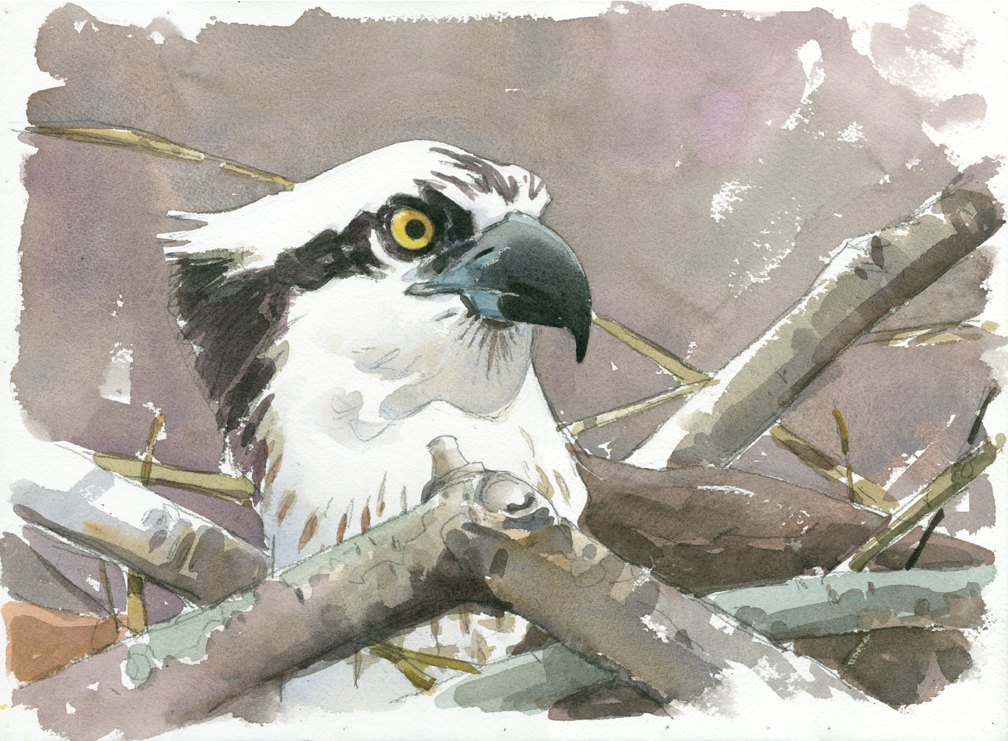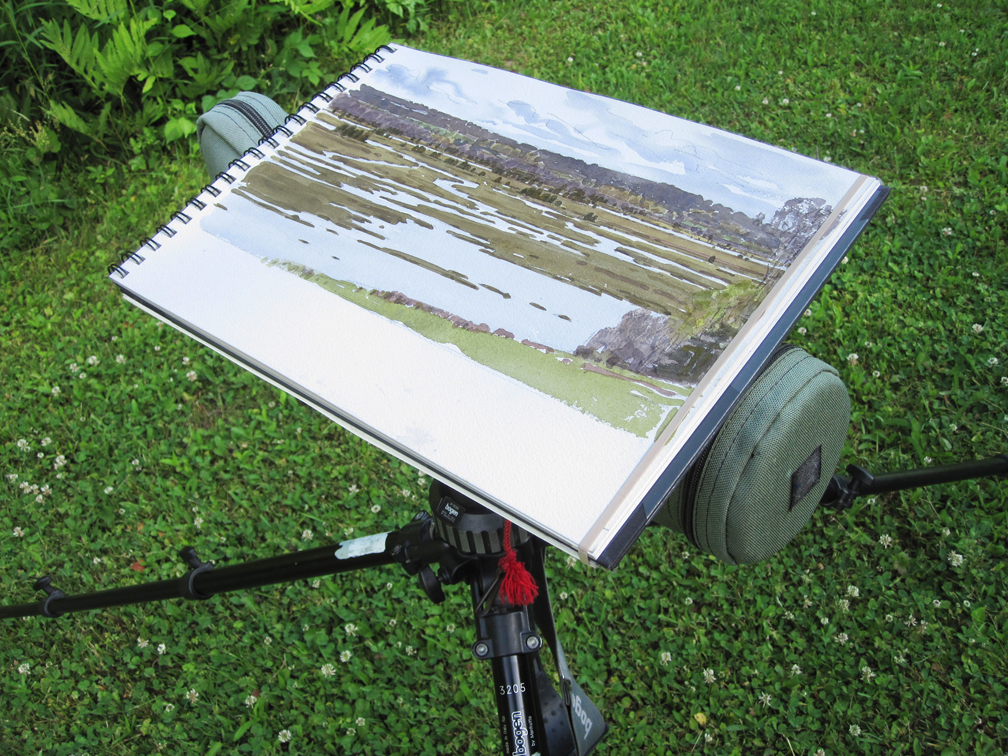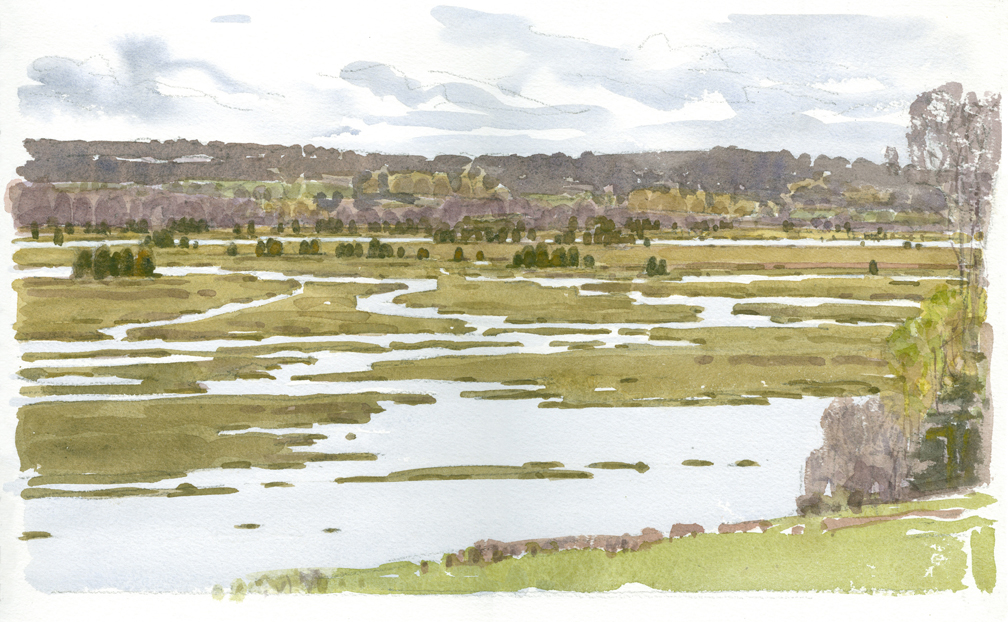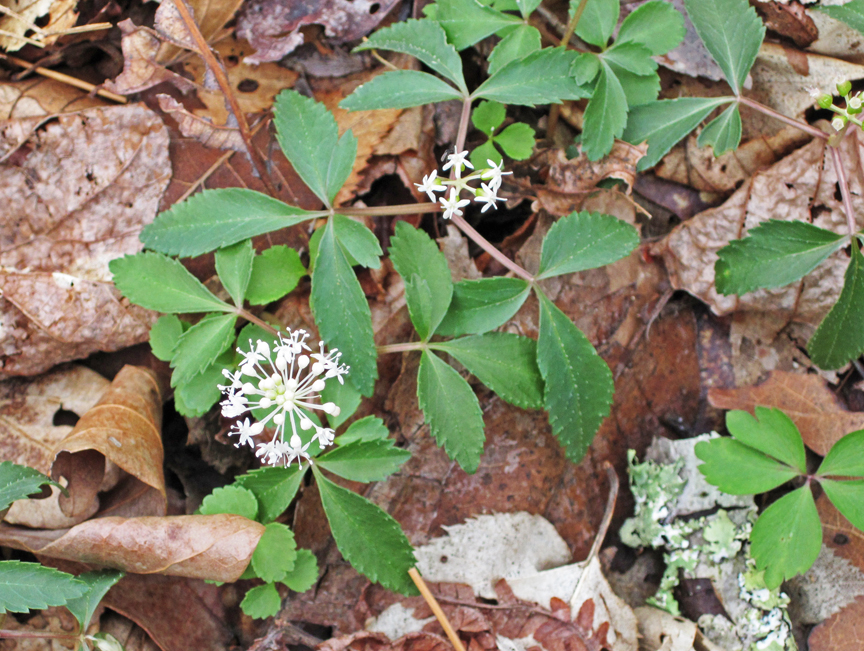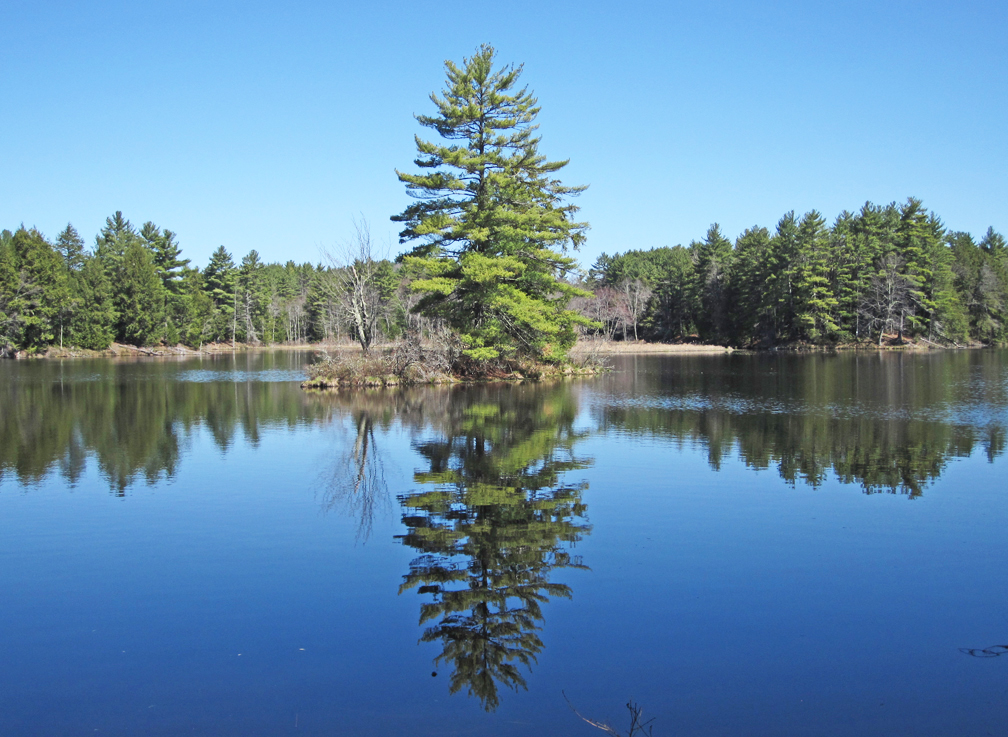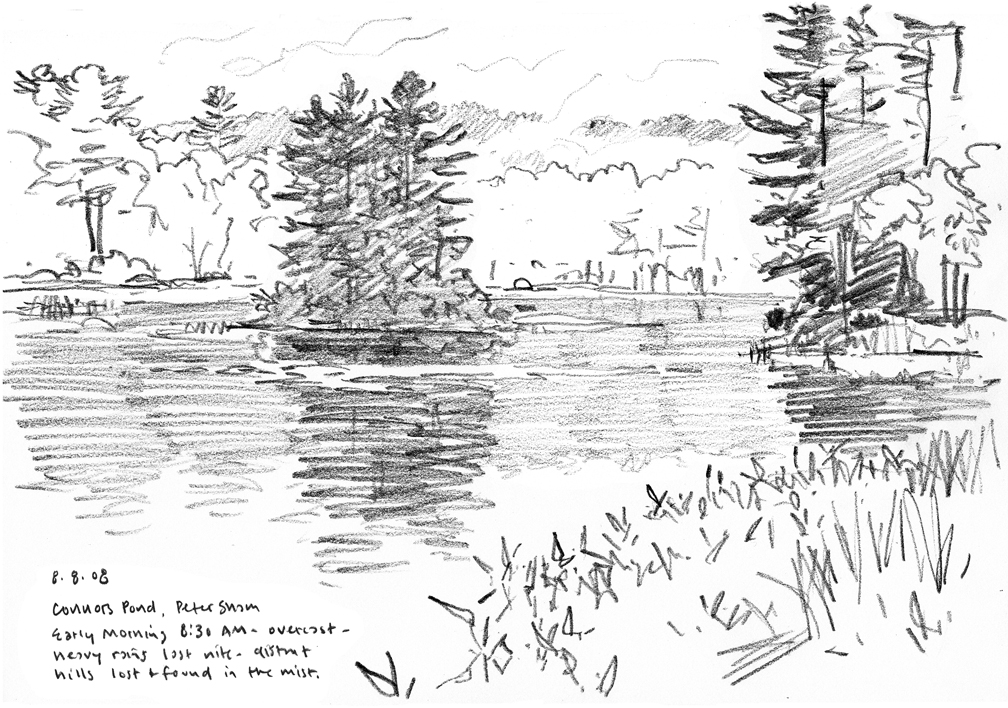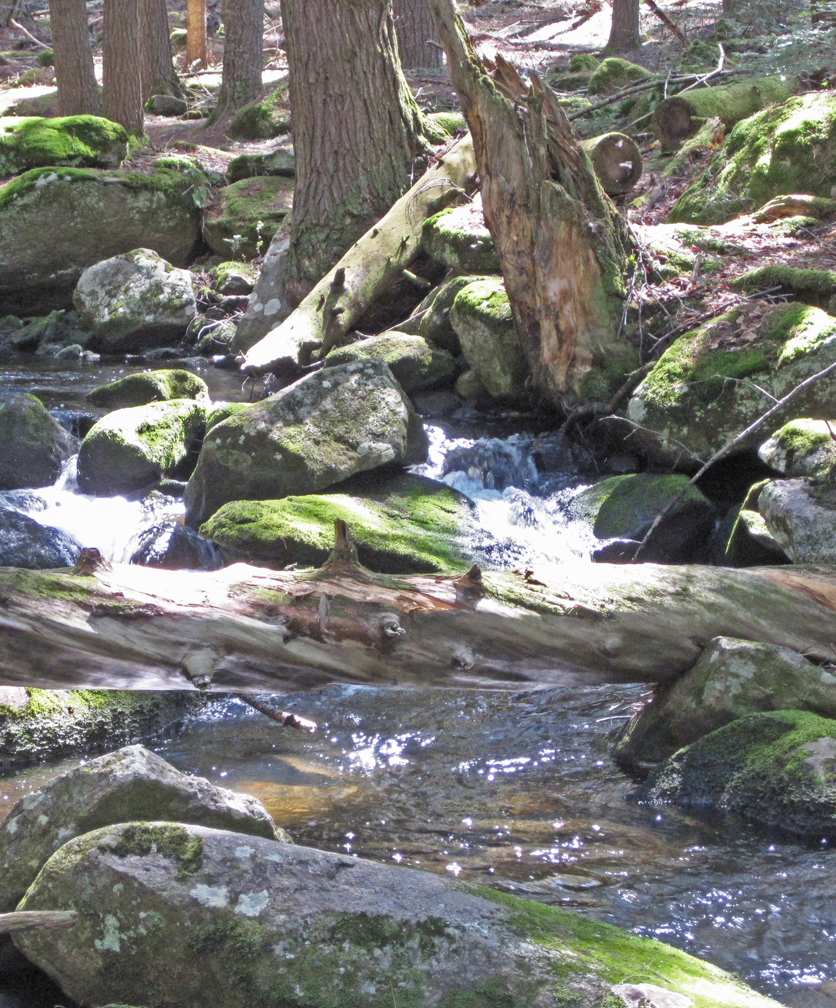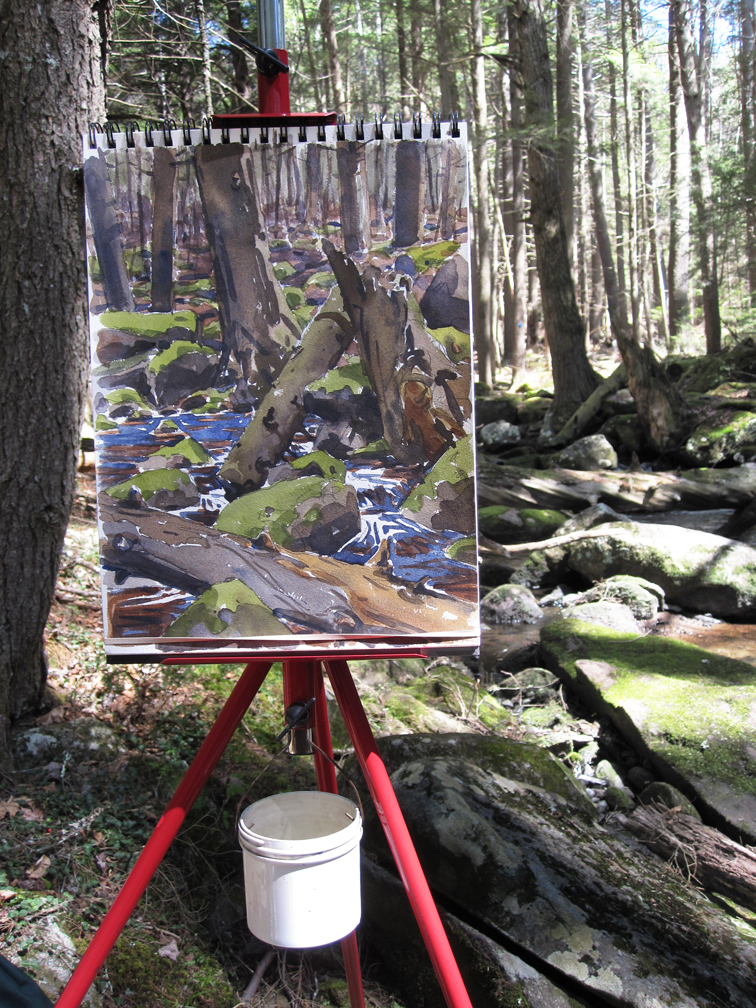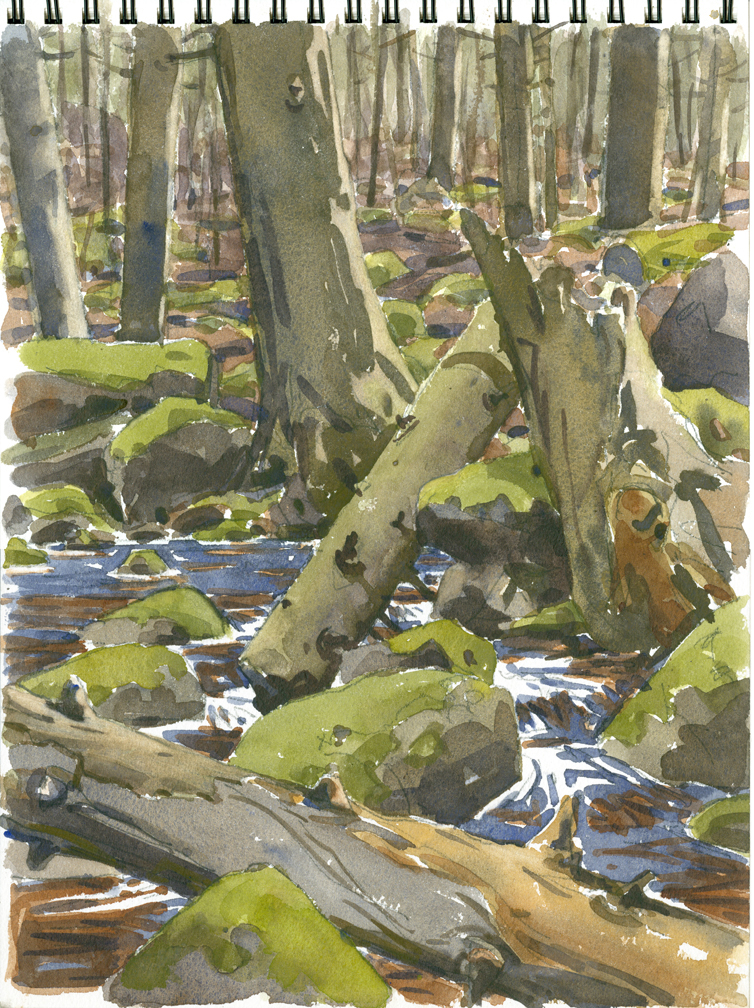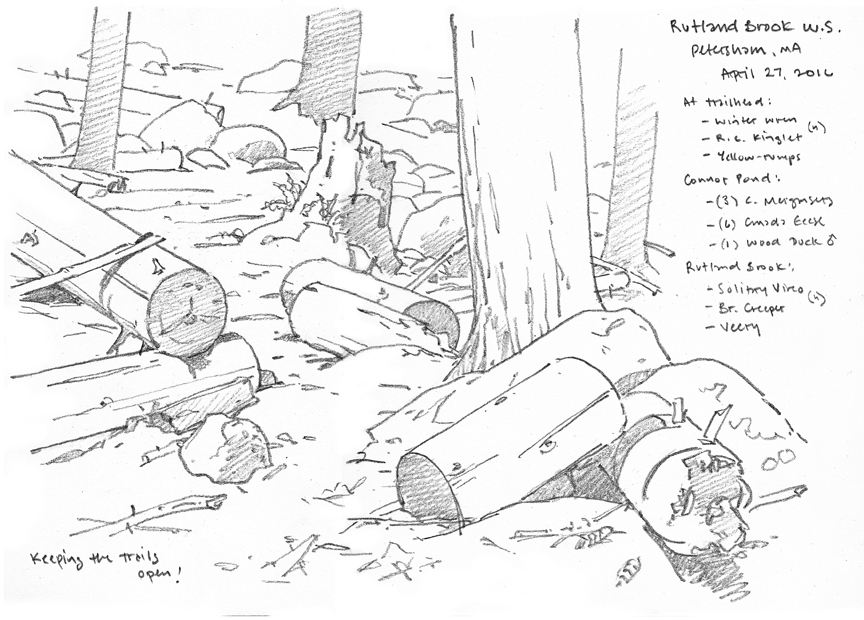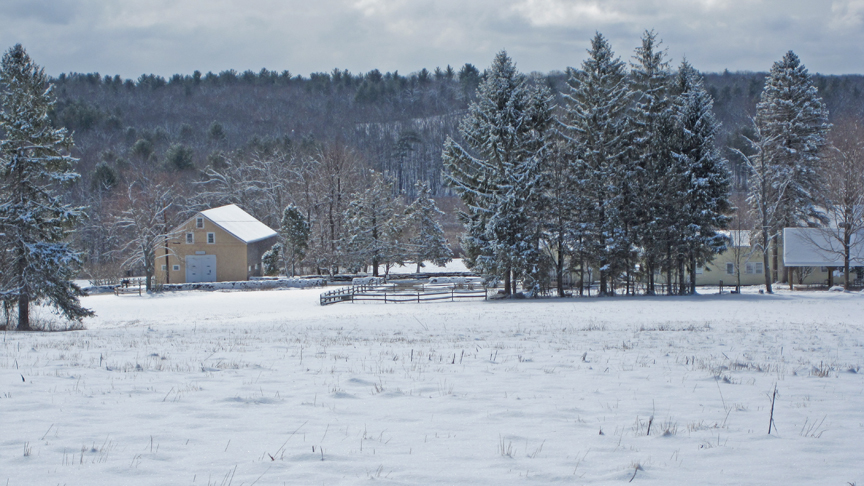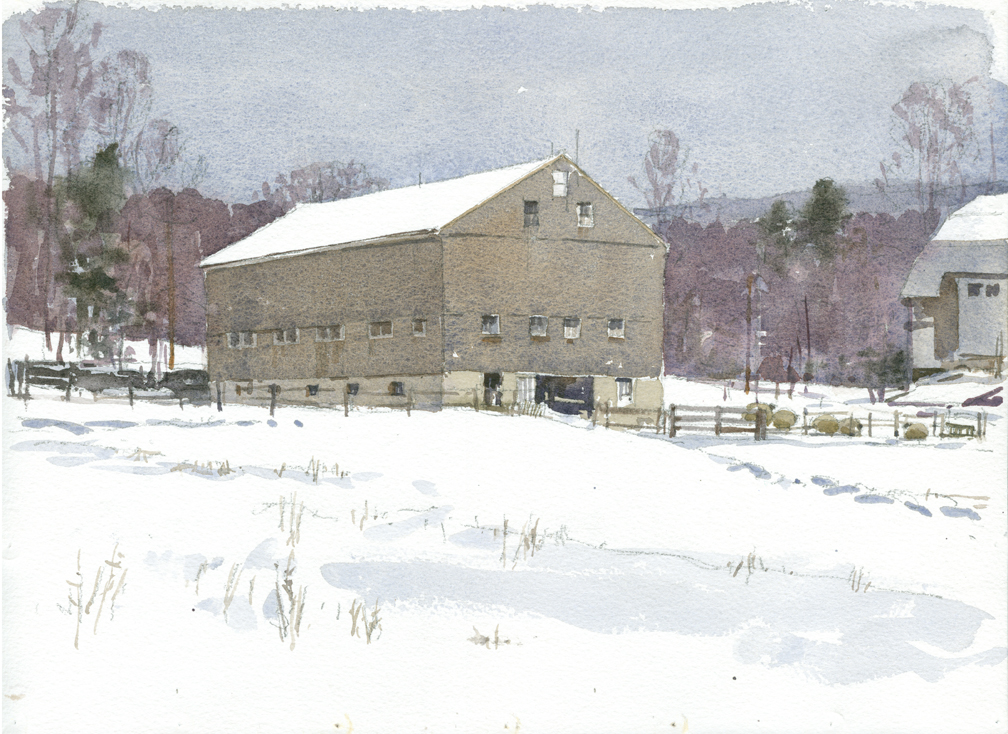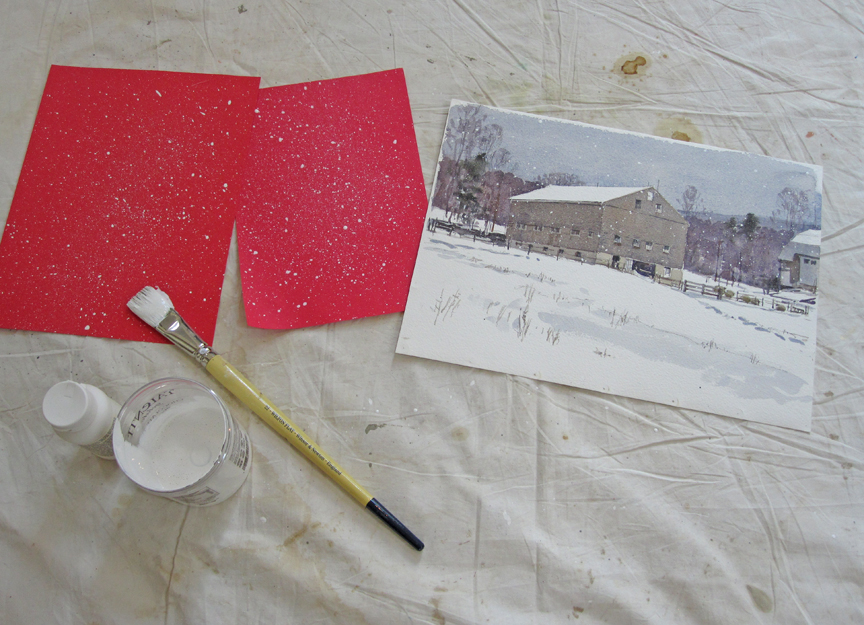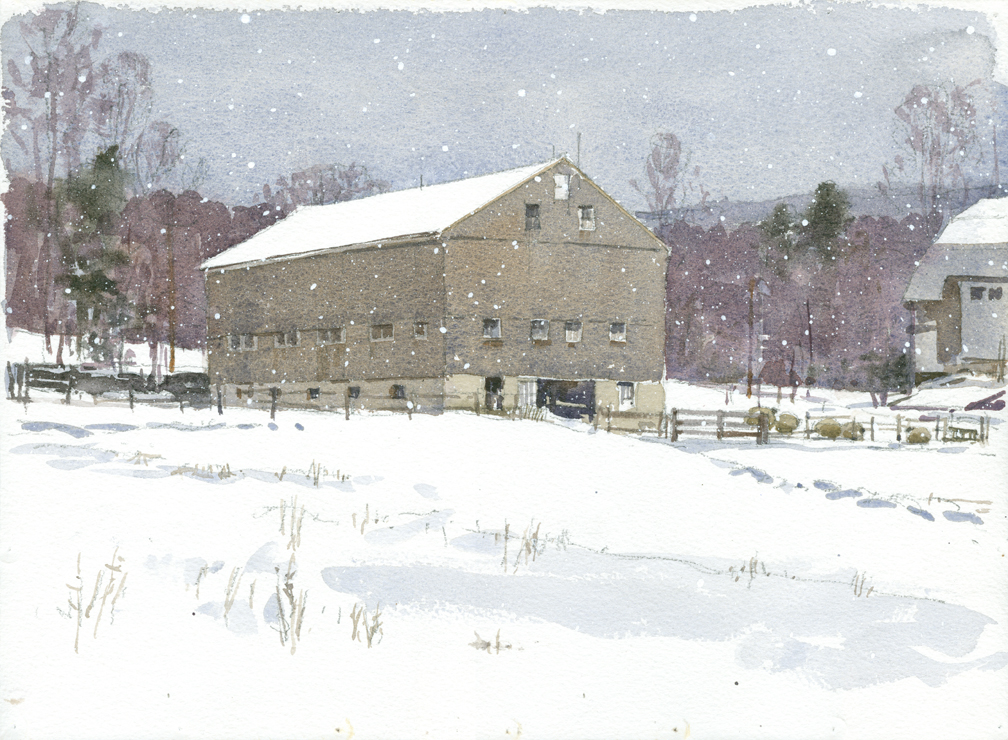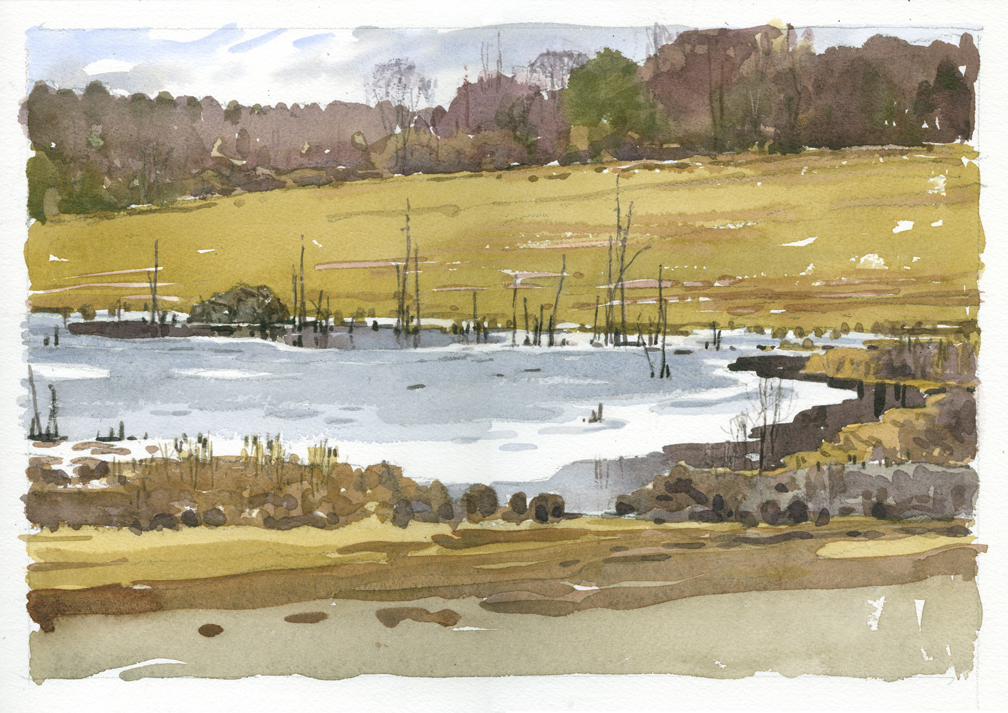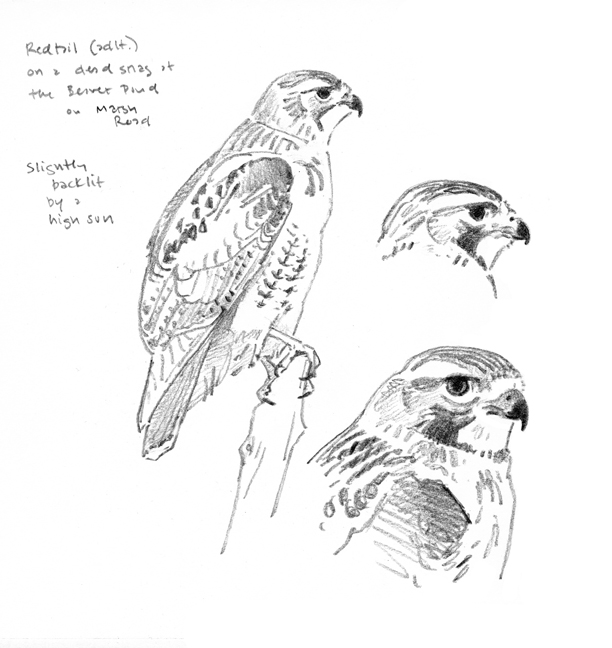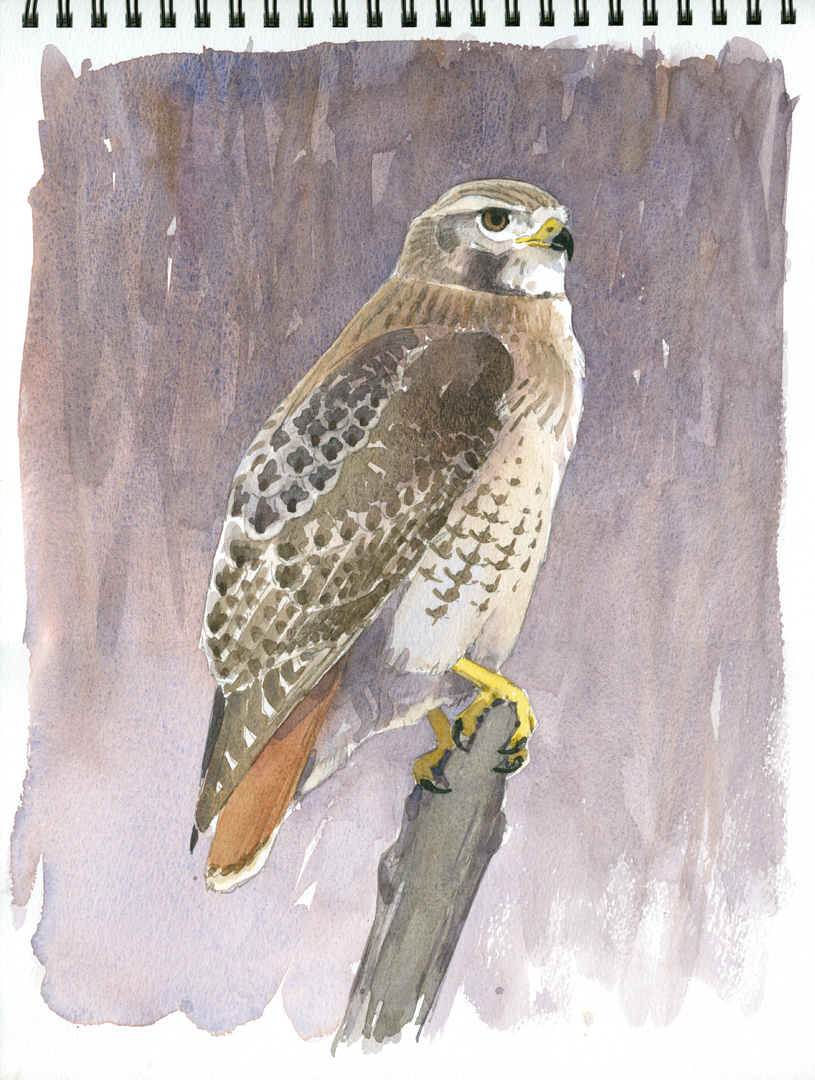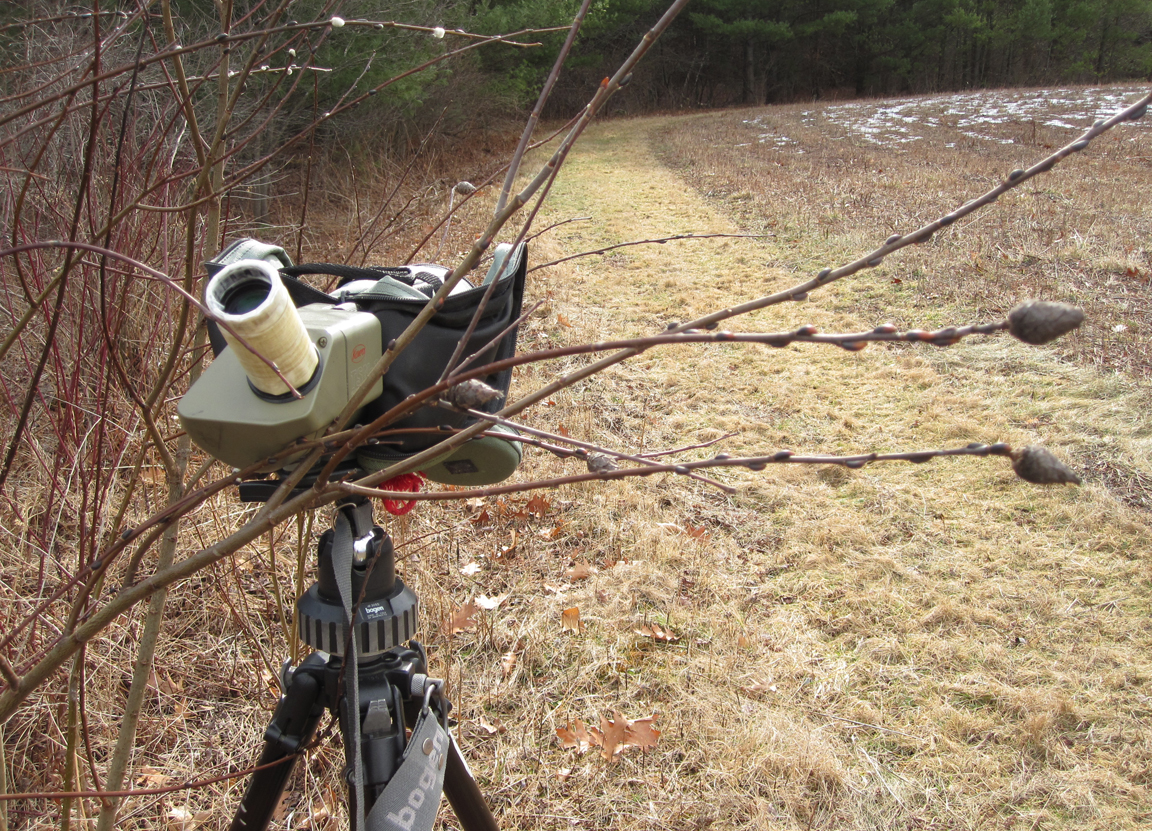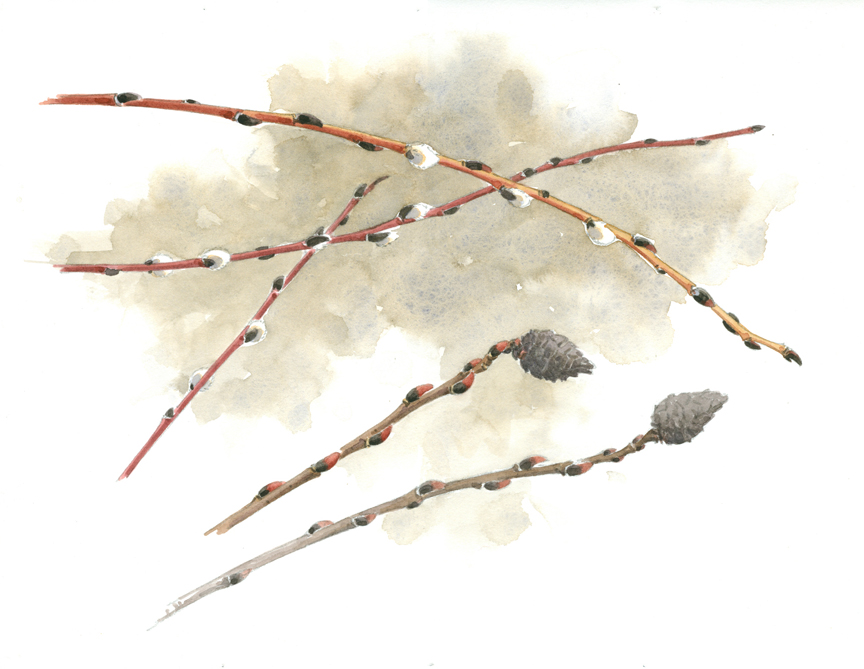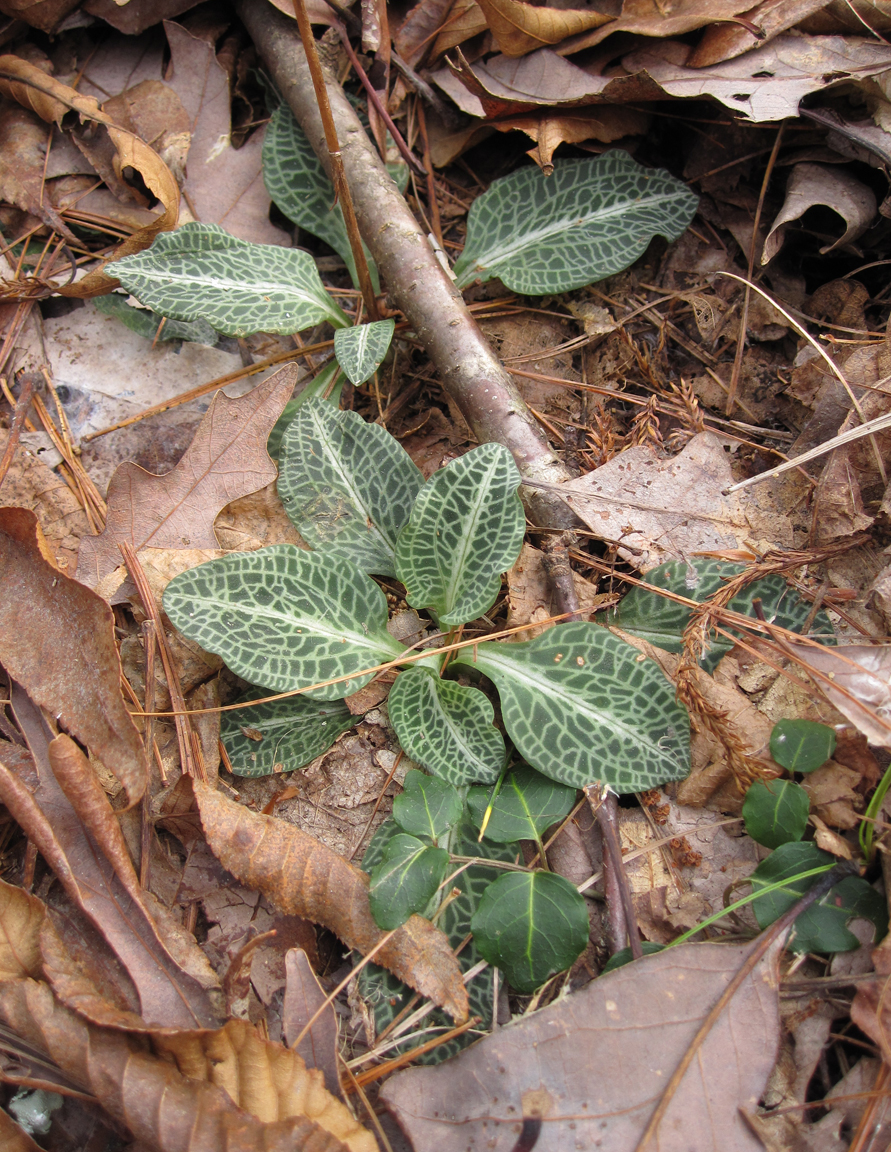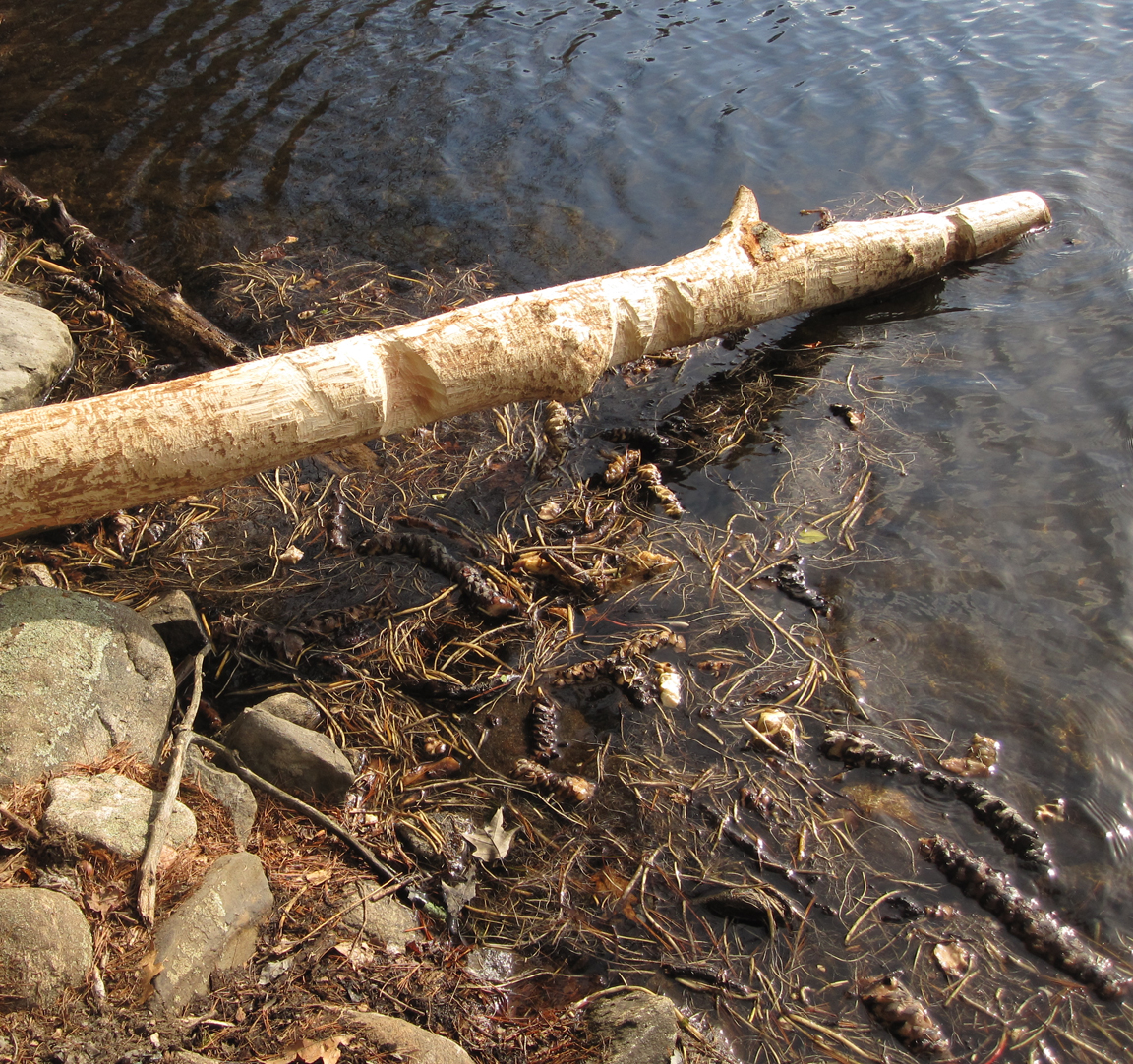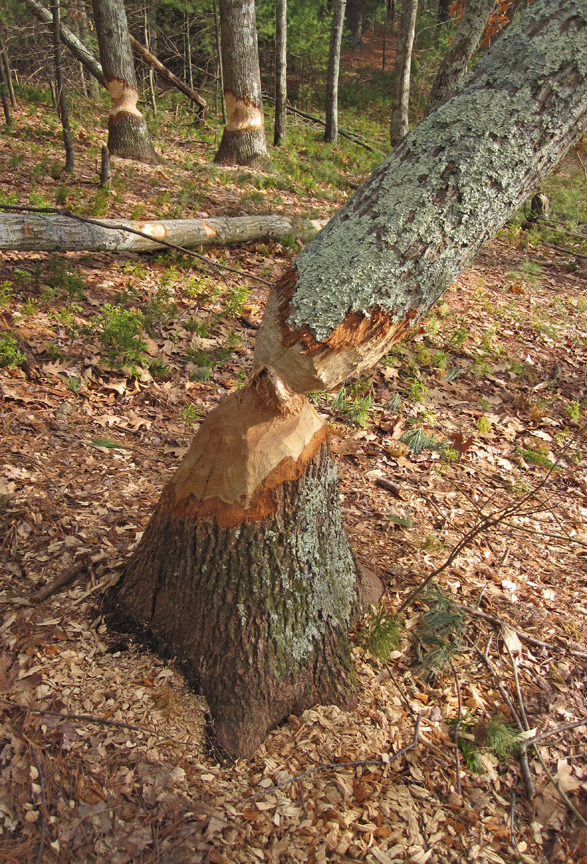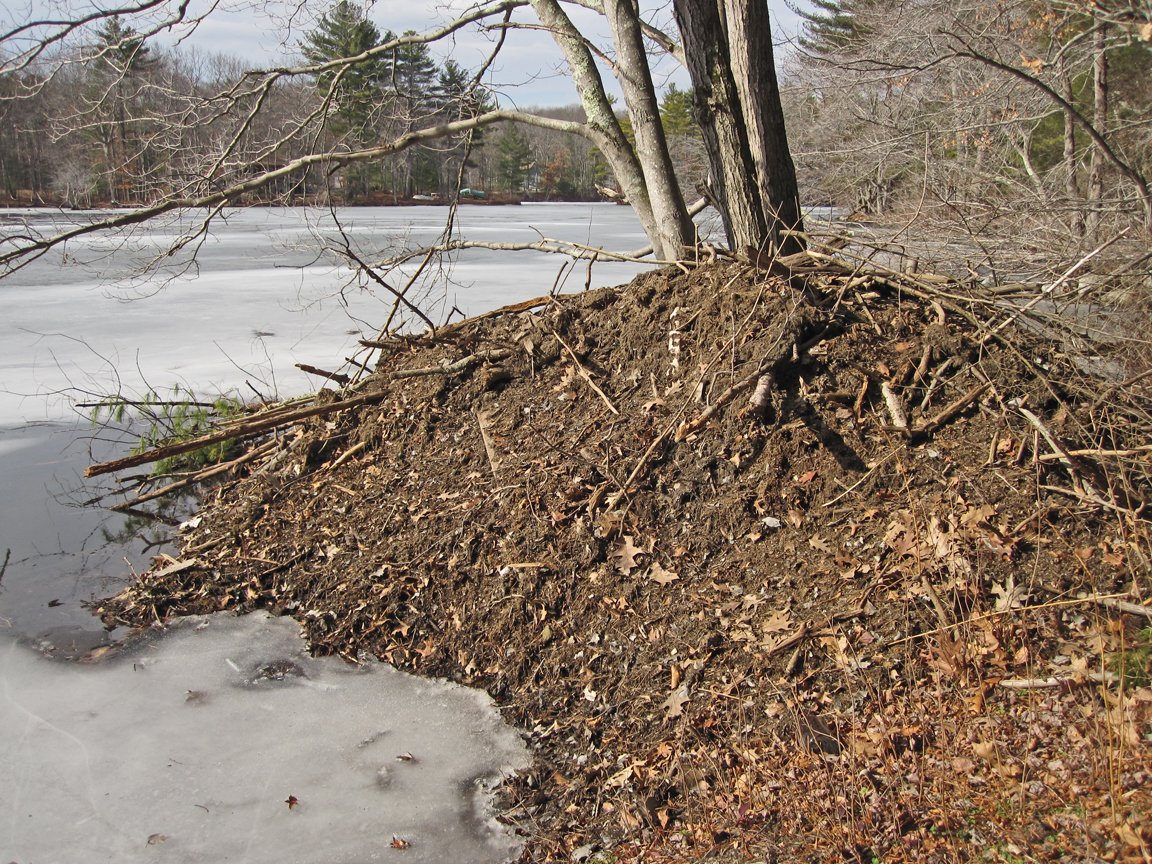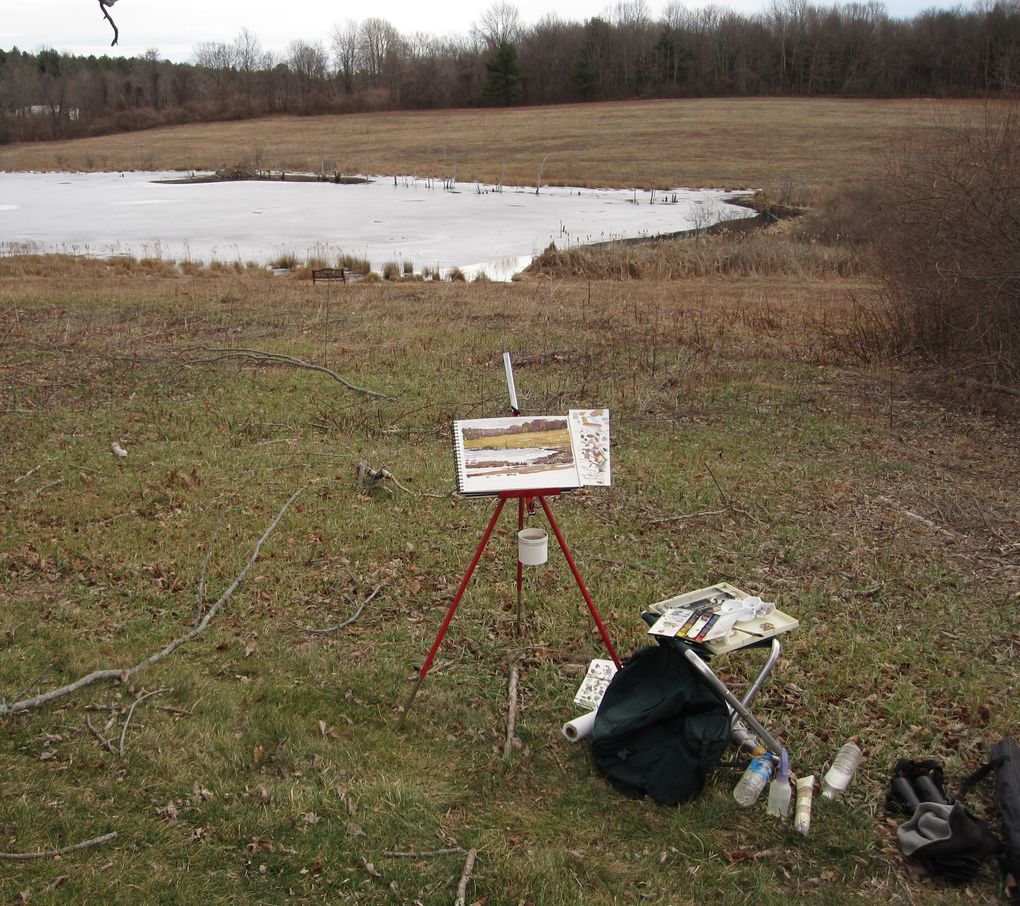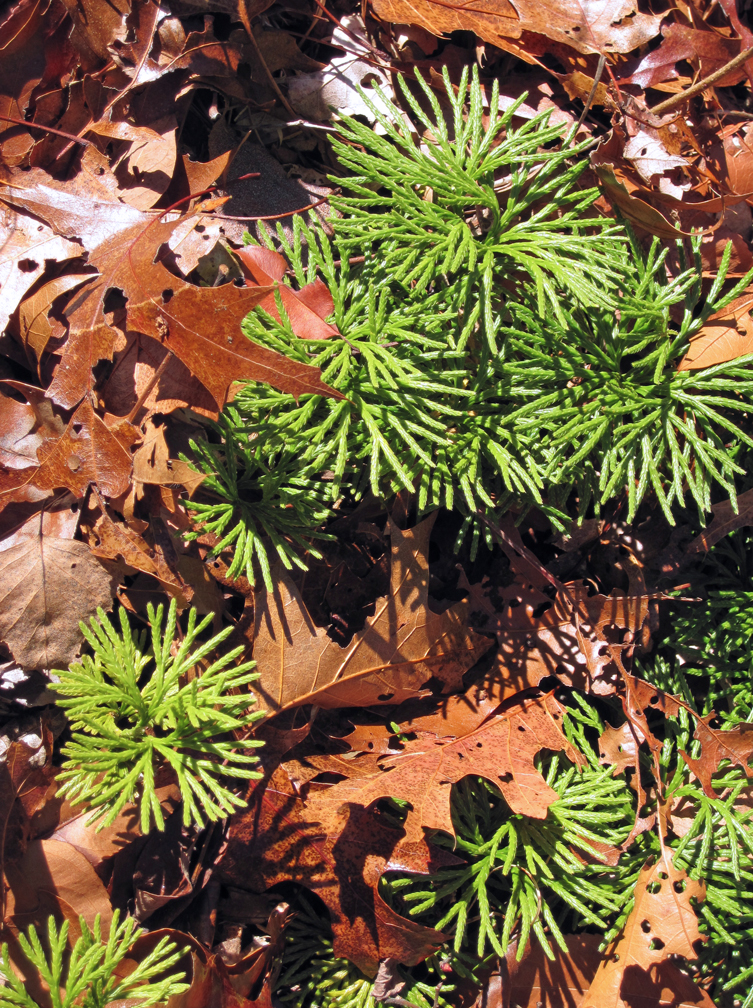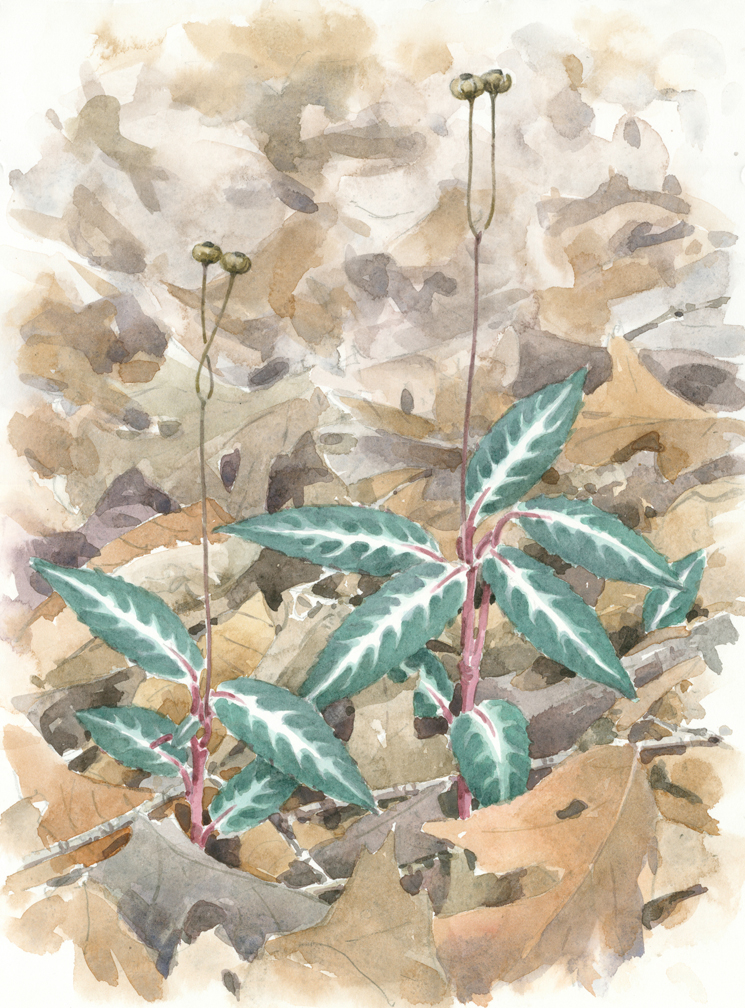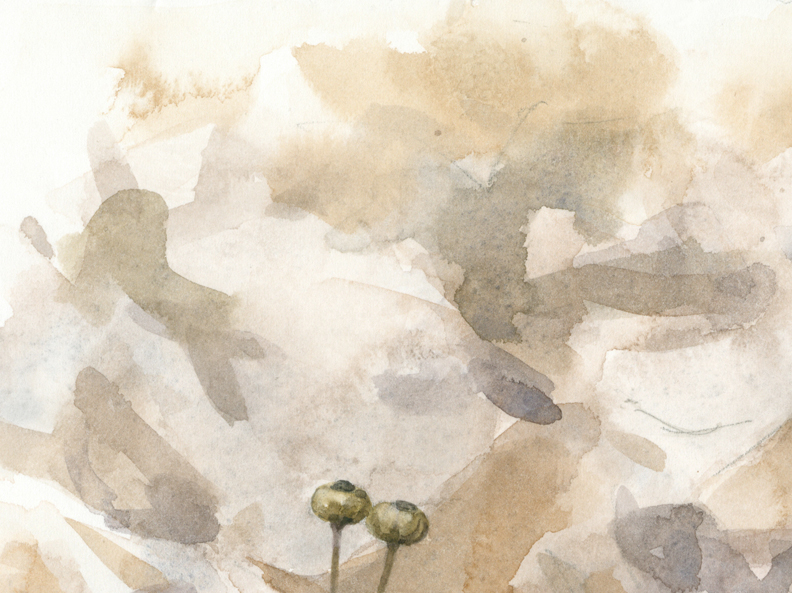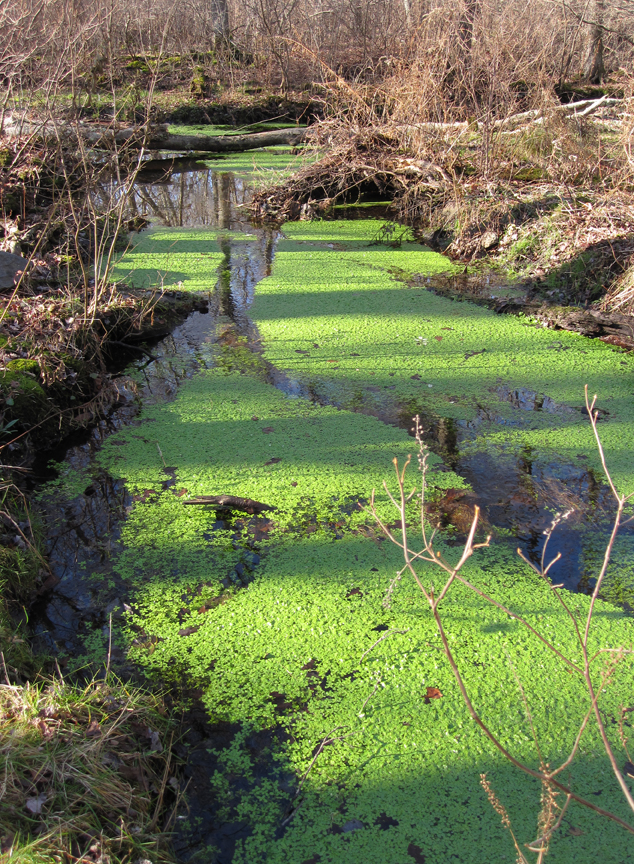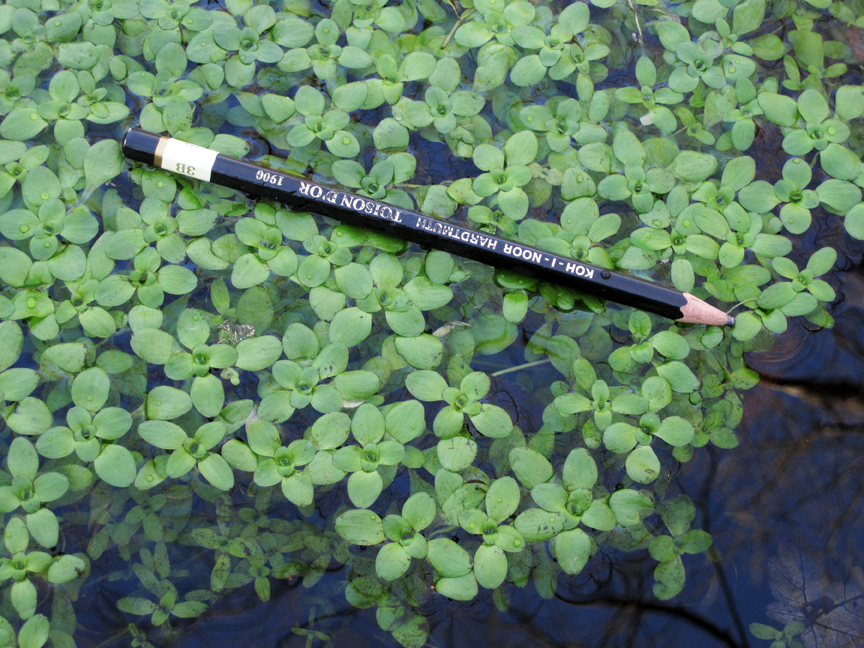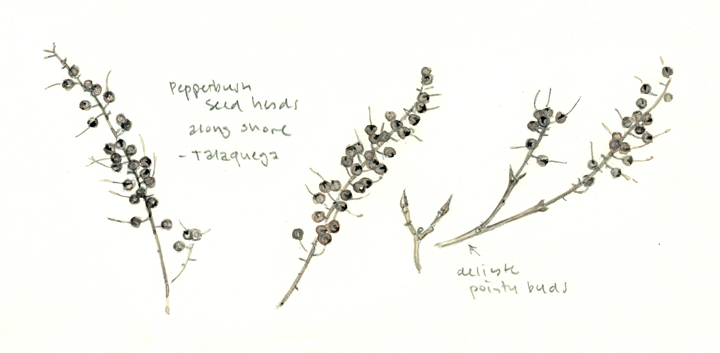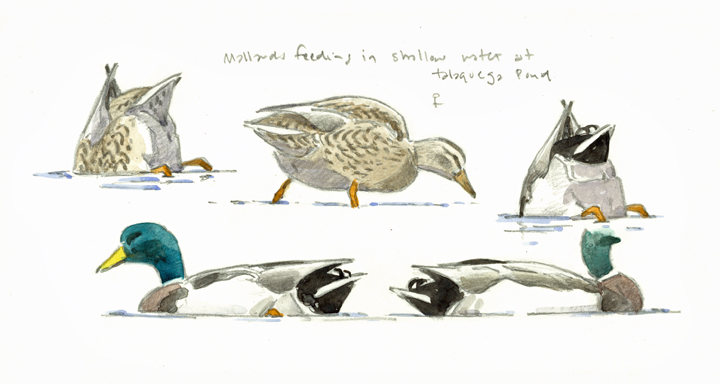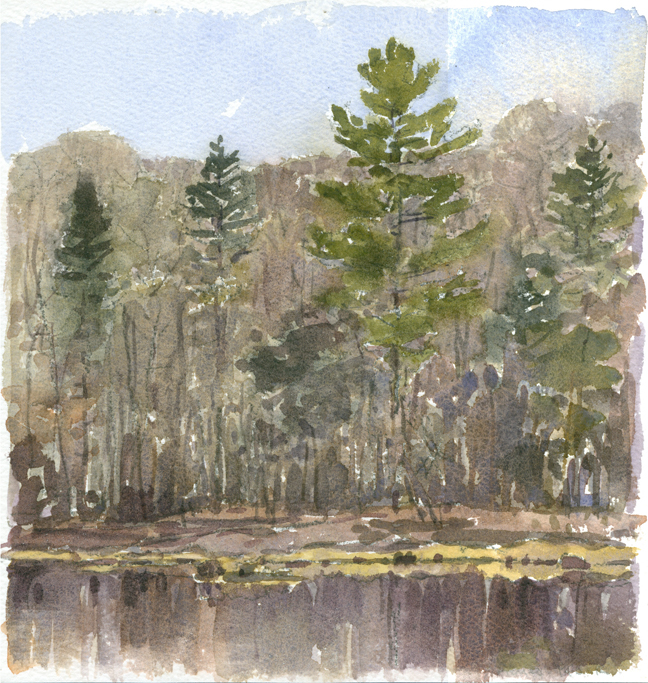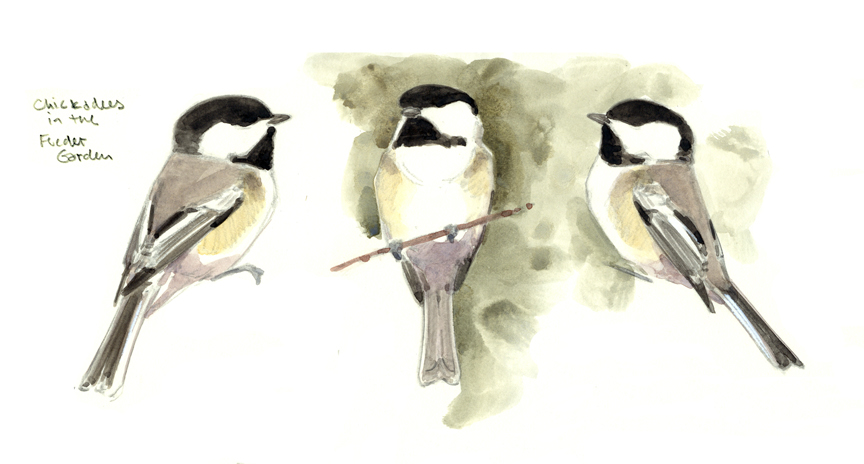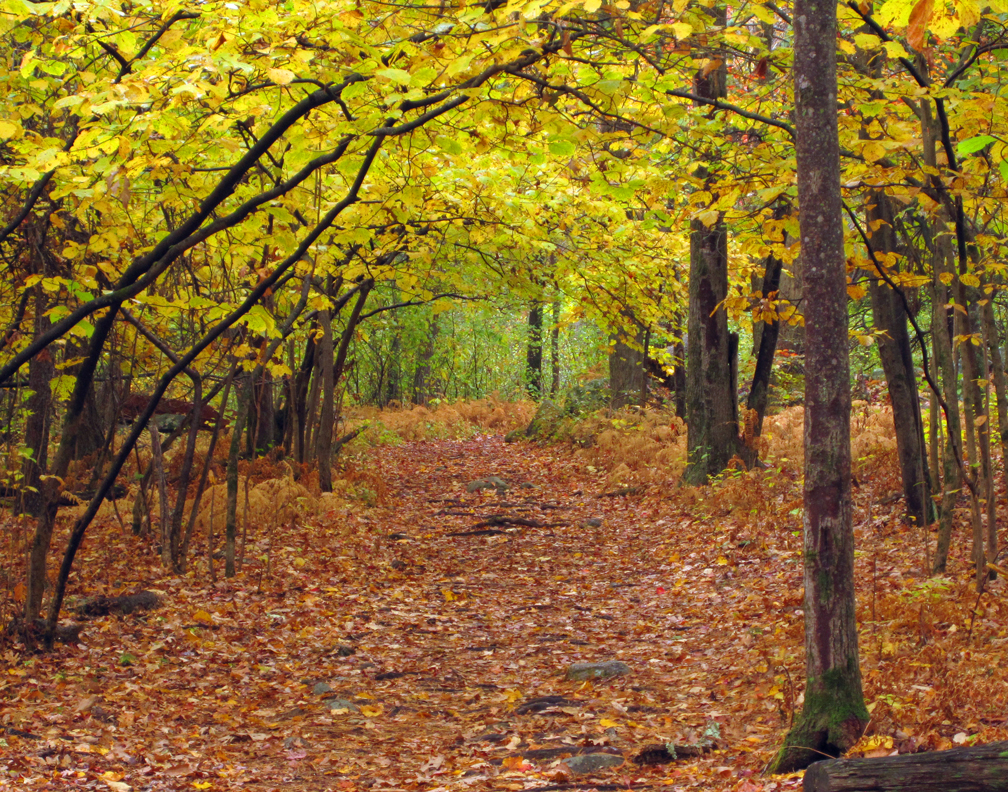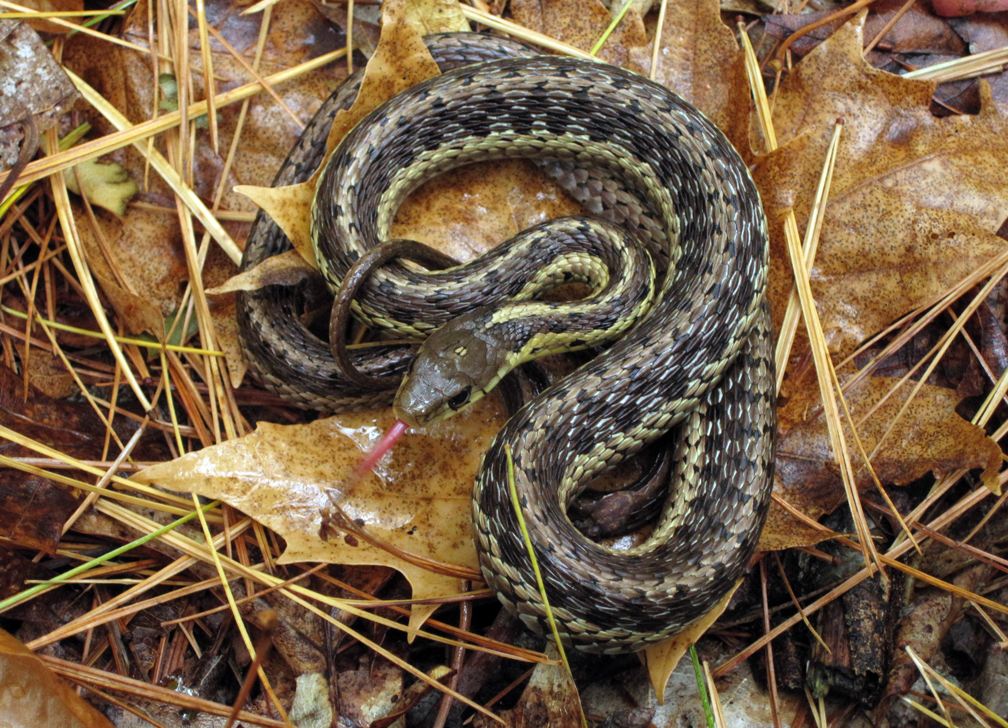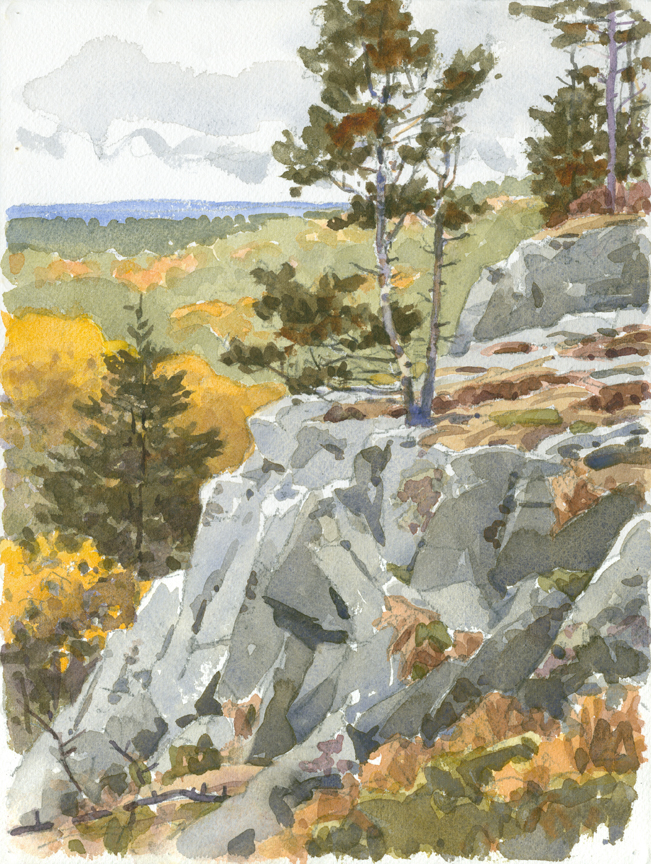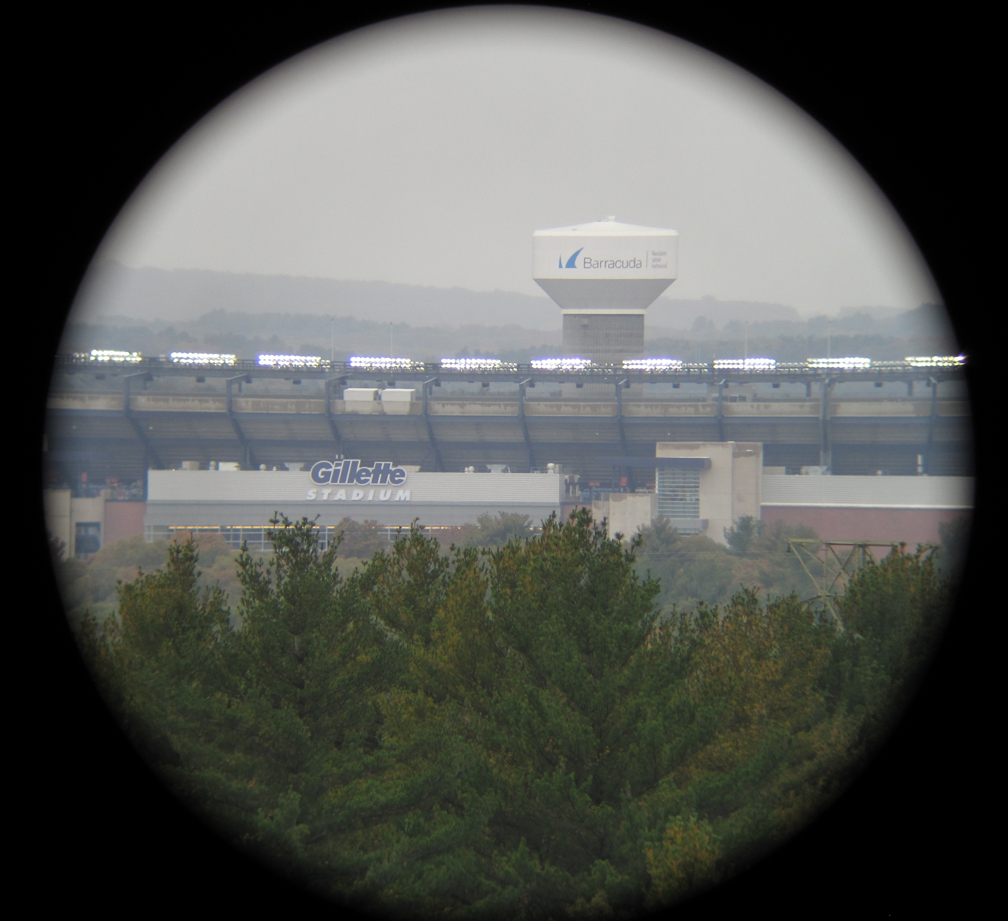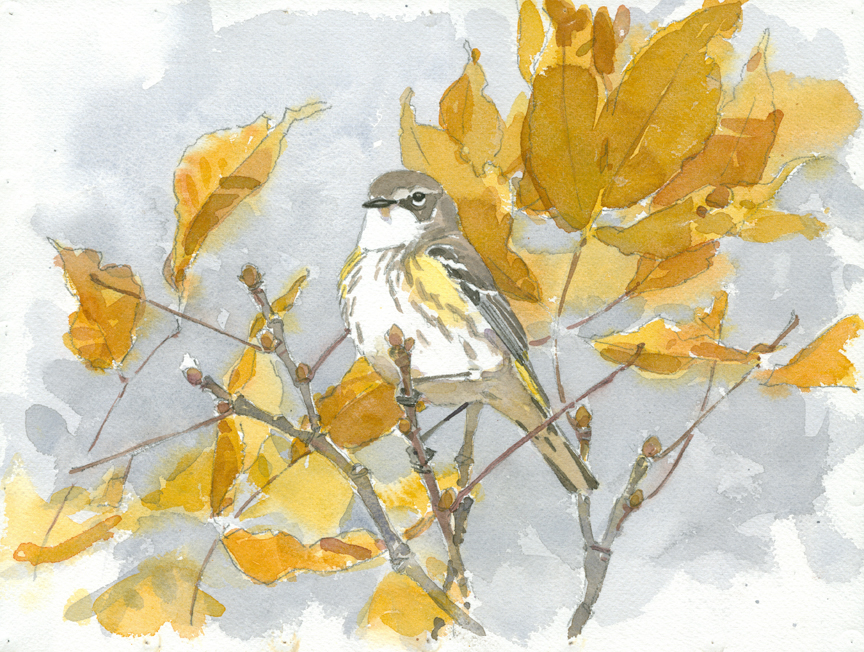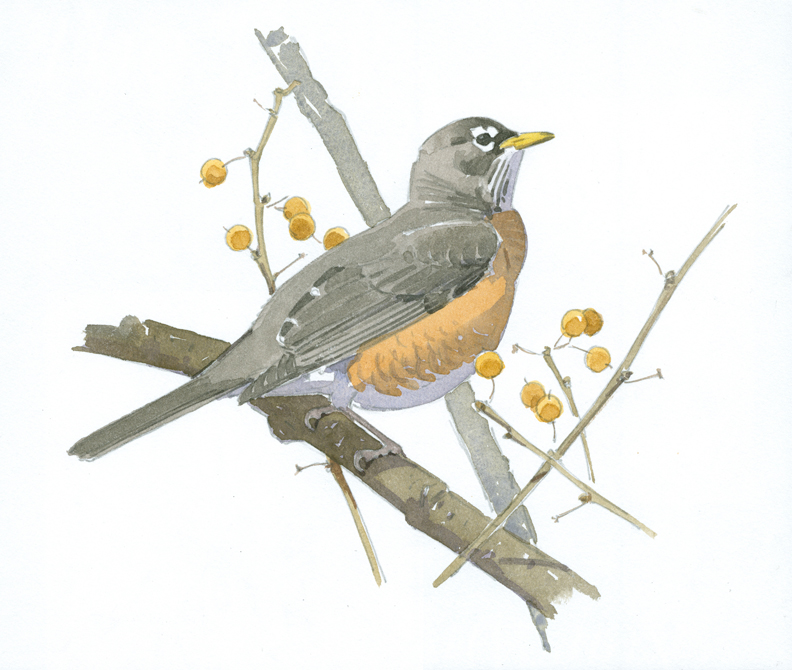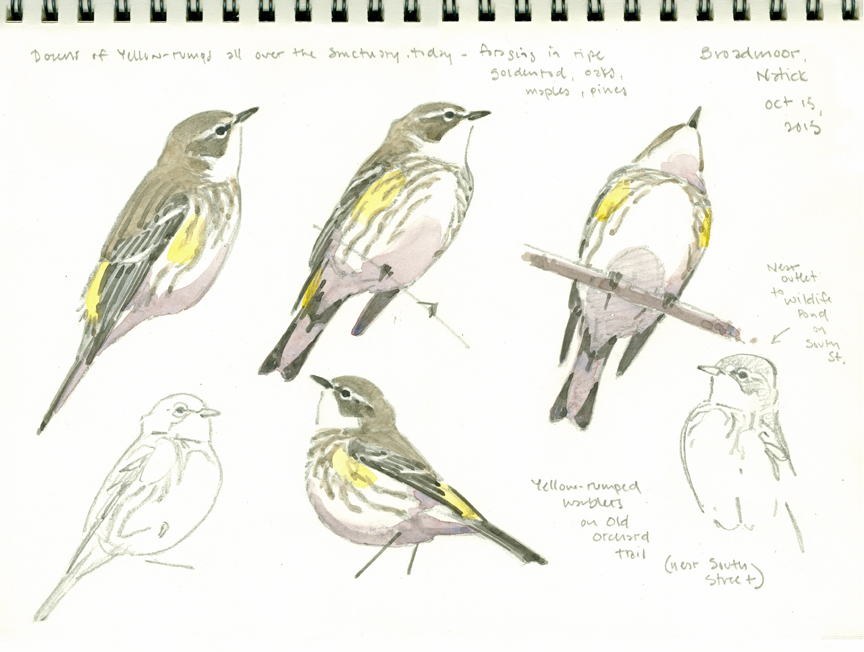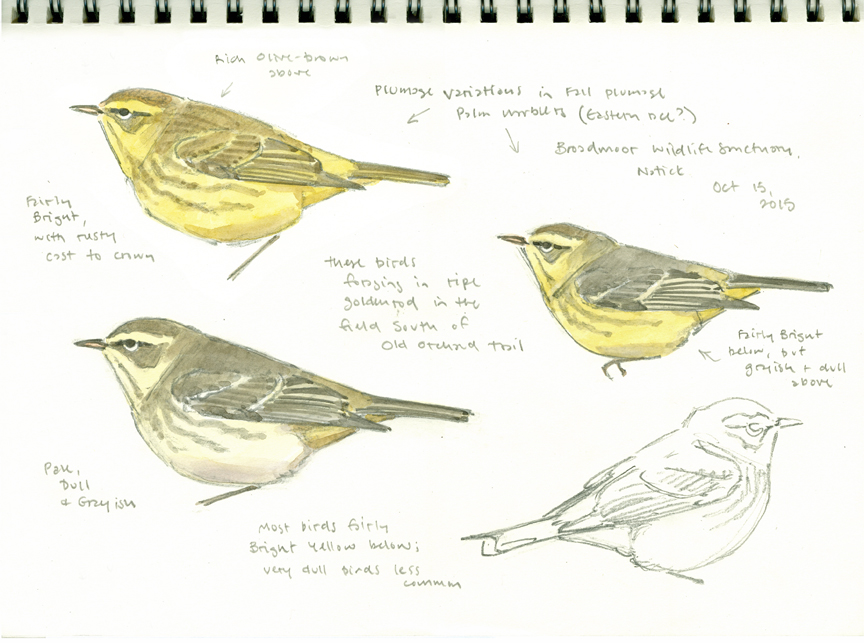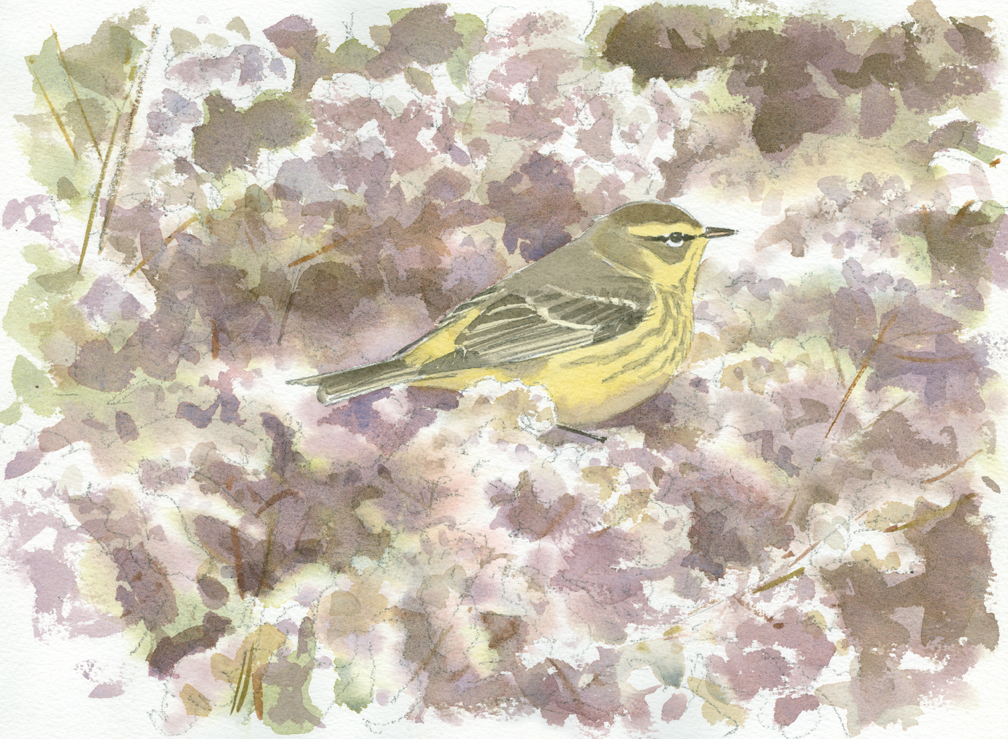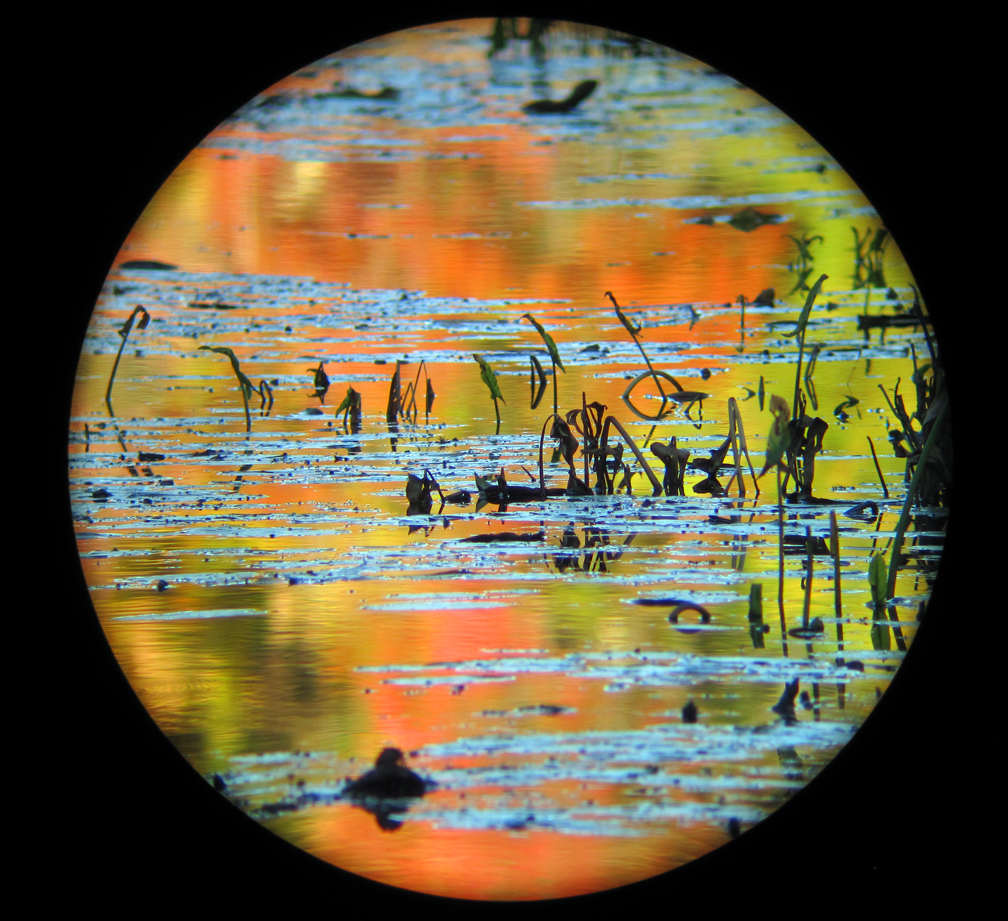Over the last few weeks, I have been captivated by working on these landscape sketches of various locations at MABA. I like to draw them with a ballpoint pen because it can be used very delicately and lightly, while also being able to achieve darker values.

View while sitting at one of the picnic tables by the parking lot
It is important to show perspective when drawing large spaces. The drawing above implies distance because the far away areas use darker values than the close areas. In the foreground, the picnic table uses only a few lines, while the trees in the background are more dense. This use of value makes sense for this setting because the space farther away from me was more shaded, while the spot where I was sitting was in the sun.

Education building, from the garden
This drawing also uses value to show perspective, but is a good example of linear perspective, too. The lines of the architecture and path all converge to a point in the background, showing space.


Abstracted drawing of where the Main Loop Trail intersects with a stone wall
The two drawings above show a less literal method of sketching a landscape. When I am abstracting my subject like this, I don’t look down at what I am drawing as often. These drawings produce looser lines that have more character.

View of the education building from the meadow
The sketch above is one of my favorites from this summer. The reason I like it is because it makes use of a lot of blank space, but is still exciting to look at. I think this works because the blank space is shaped in interesting ways, so that it works with the subject of the drawing instead of just becoming a flat background for it.

When drawing in nature, I often struggle with filling up large areas of foliage; there aren’t clear forms or shadows that can be drawn. In the drawing above, I approached this problem by leaving the area of leaves and ferns on the bottom right mostly blank. I shaped this blank area by drawing the things that surround it, like the path and the trees.
There is no step-by-step method to drawing a landscape. I hope these different drawings gave you some insight into what my thought process is when I am drawing. To make a drawing that truly captures a unique location, the artist has to respond to what they are seeing in a thoughtful way, using line, shape, and value to represent what they see and how they see it.



